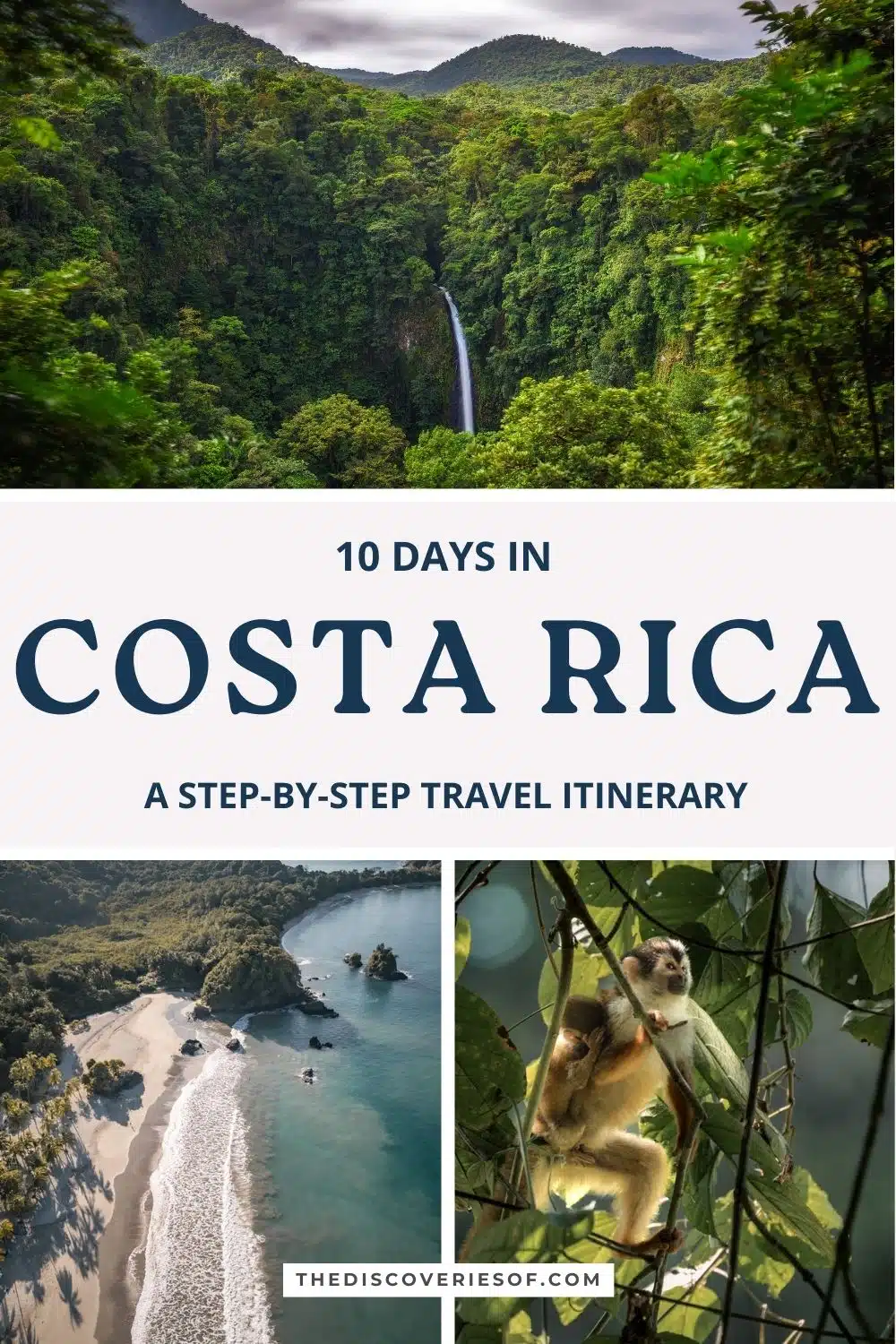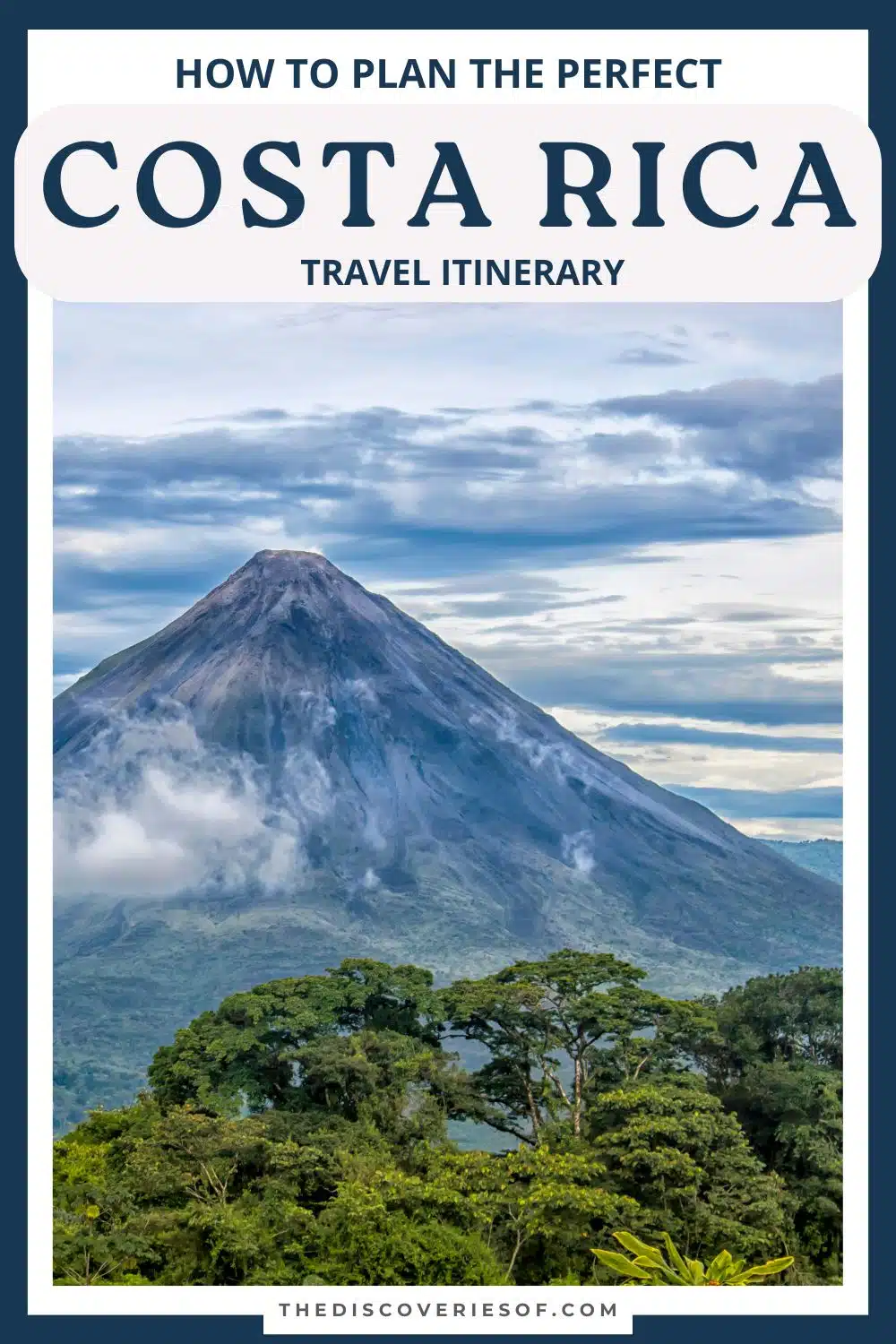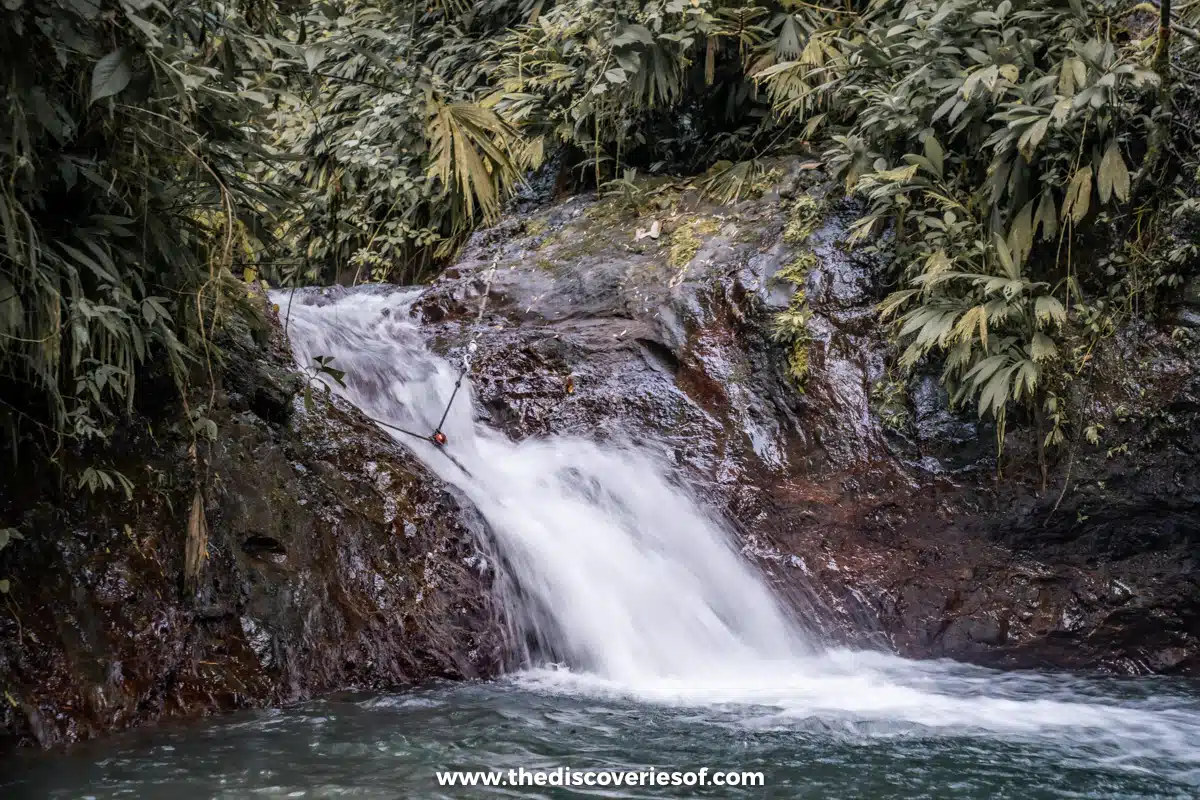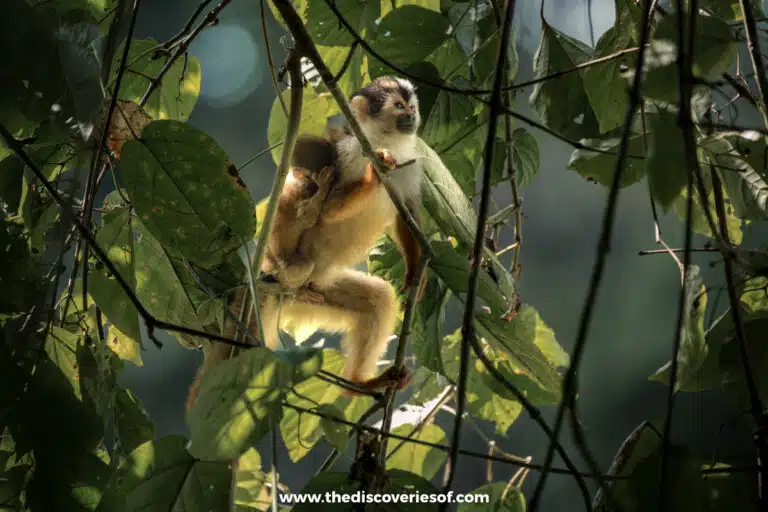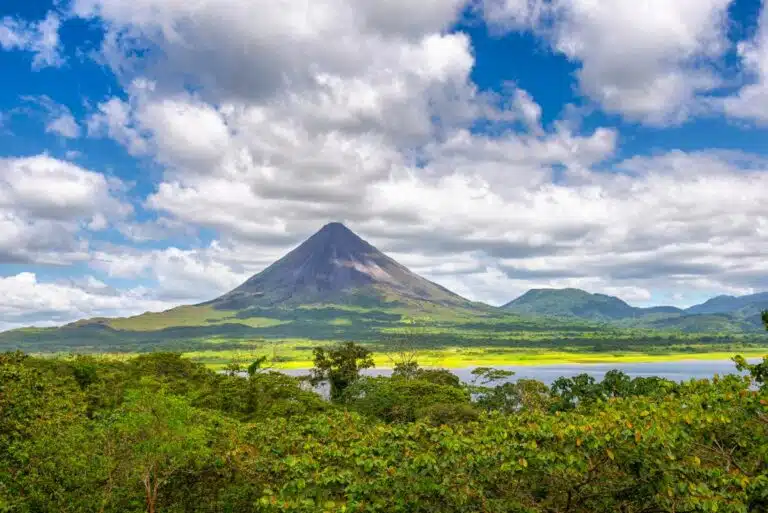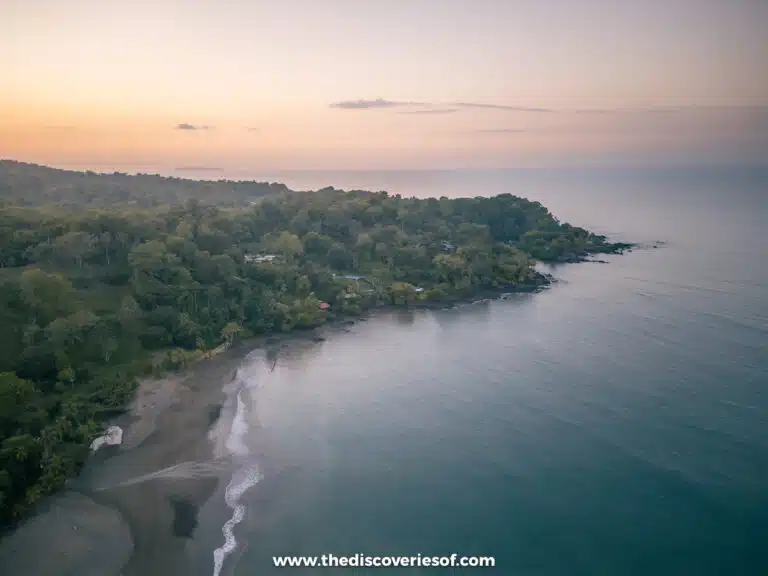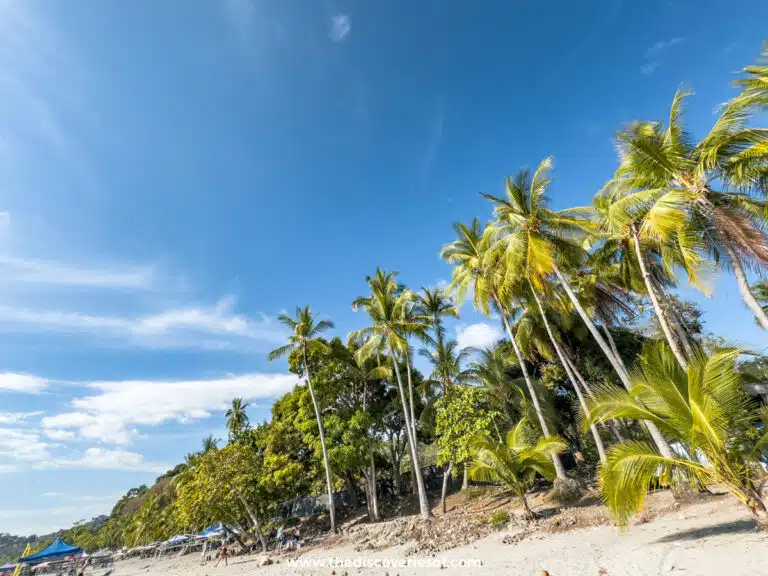Experience the best of Central America’s pristine nature and endless adventure with this guide to planning the perfect 10-day itinerary in Costa Rica.
Costa Rica is well known as a land of eye-opening nature and rich biodiversity – a pathway laid ever since the government essentially banned logging nearly 30 years ago.
Travellers from near and far flock to national parks and nature reserves to see it for themselves. Sadly, many visitors cut their trip too short, and frankly, many guidebooks hardly mention some of the country’s most stunning locations (I’m looking at you, Corcovado National Park).
I just returned from my third research trip to Costa Rica and discovered even more incredible rainforest hikes, secluded beaches, and rare wildlife sightings. Flying, driving and taking buses through the country, I dialled in on how to maximise your time here for the best possible trip.
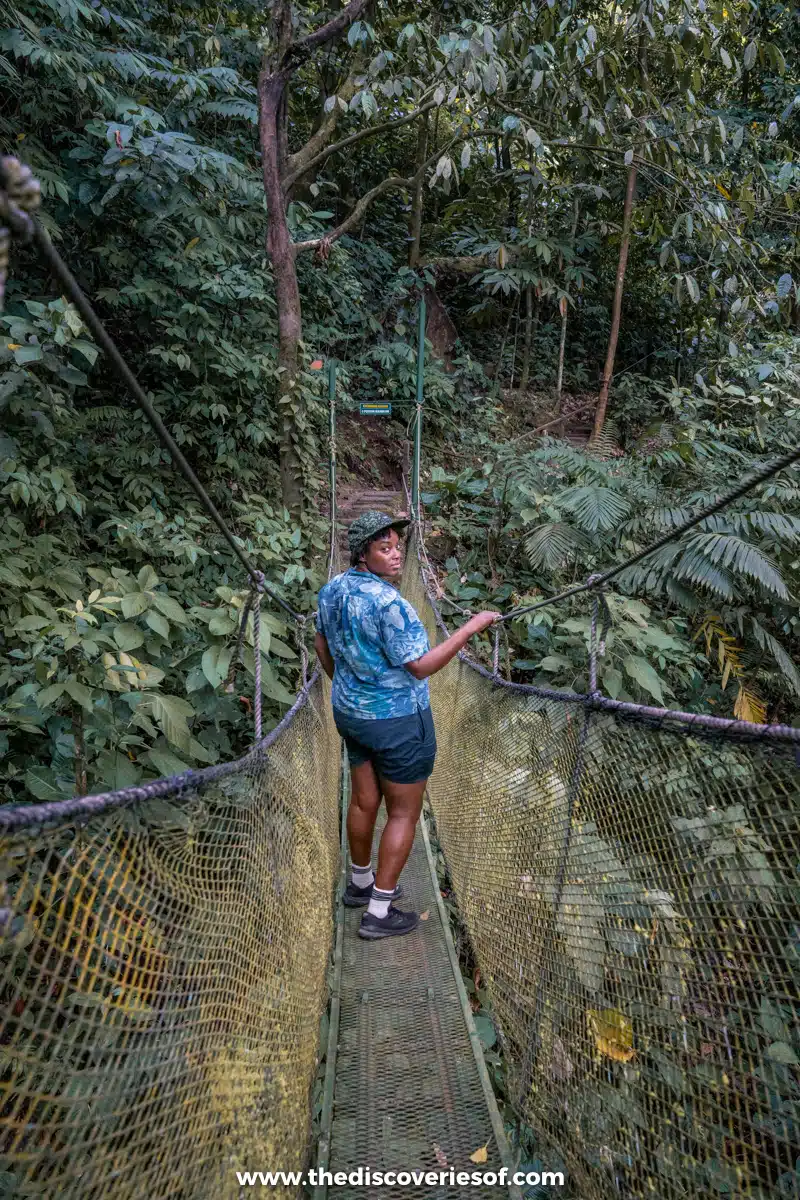
Chatting with locals, listening intently to tour guides and doing my best to uncover hidden gems, I have created IMHO the perfect 10-day Costa Rica itinerary.
Start out with learning about the history of this (mostly) military-free country in the capital before setting off to the incredible jungles, forests, and coasts where nature is in top form. I’ll guide you through adventures in Arenal, how to make the most of a visit to Manuel Antonio and take you to the best snorkelling spot you’ve never heard of if you have a little extra time.
Ready to experience pura vida for yourself? Embark on this 10-day Costa Rica itinerary.
Costa Rica Itinerary
Costa Rica Itinerary Day 1: San José
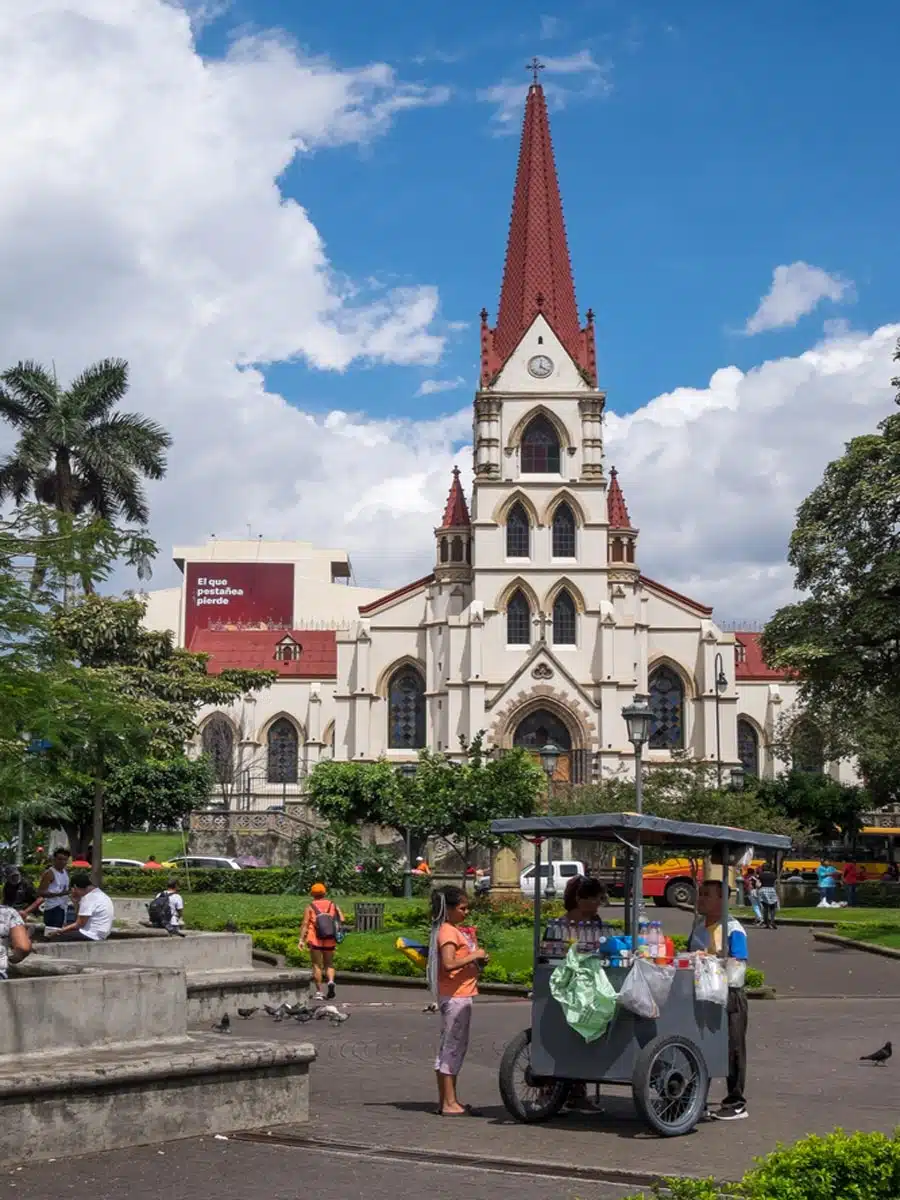
San José is the capital city of Costa Rica and is full of important historical and cultural landmarks from pre-Columbian times to the present.
The bustling neighbourhoods have parks and green spaces, offering a place to chill out and get a sense of local life before heading out for the national parks and jungles. Expect colonial architecture, Costa Rican restaurants, and bustling plazas and you won’t be disappointed.
Things to Do in San José
National Museum of Costa Rica
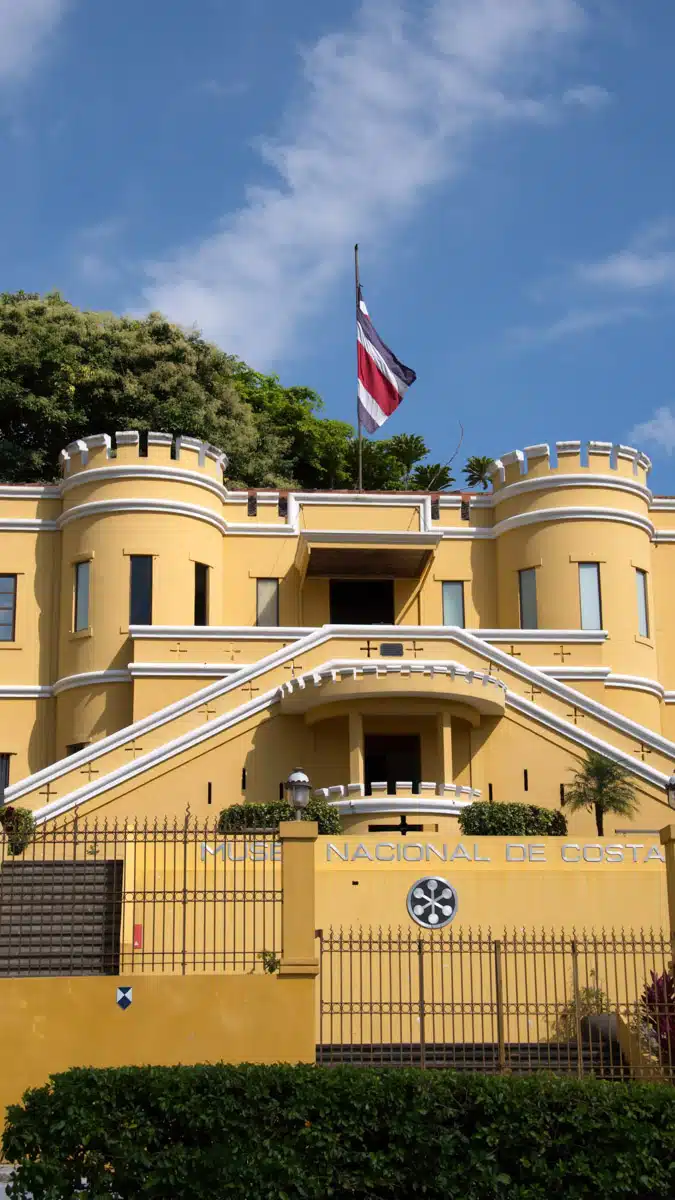
Located in the Bellavista Military Barracks, the bright yellow fortress serves as a reminder that Costa Rica hasn’t had a military since the end of the civil war in the mid-20th century.
Walking around outside, you’ll find pre-Columbian artefacts and a beautiful butterfly garden. Inside, you’ll find a dynamic collection displaying indigenous artwork, videos explaining the country’s political history, and a first-hand look at the prison cells where inmates lived and slept.
It’s truly a time capsule, and if you look closely you can see graffiti from prisoners and bullet holes on the walls from the war.
Tickets
Dinner at Restaurante Silvestre
Get yourself ready for a 10-day itinerary by eating at (arguably) the best restaurant in Costa Rica’s capital city. Restaurante Silvestre by Santiago Fernández Benedetto offers exceptional modern cuisine in a dramatic setting, located in an art deco mansion.
The restaurant has been open for less than a decade, located amongst the colonial architecture and trendy storefronts in Barrio Amón.
Make reservations ahead of time (the outdoor space is lovely) and try the chef’s tasting menu, where you can try 7 courses of beautifully prepared local produce, seafood, and meat dishes for $105 (¢54 000). The menu changes often, but one constant is the laid-back setting, colourful platings, and excellent wine list.
Getting to San José
San José is the most common location to begin and end a Costa Rica itinerary, and worked out beautifully for me on my last visit.
Fly into Juan Santamaria International Airport – SJO and hire a car for your trip or take a private transfer to your hotel.
Suggested Stay
Grano de Oro Hotel
Grano de Oro is a beautiful 4-star hotel in the heart of San José near the best museums and parks. Dark hardwood panels and antique furniture contrast with lush plant life right outside the windows, giving it an upscale, old-school feel.
The hotel includes free parking and breakfast on-site, making it a perfect location to kick off your Costa Rica road trip.
Costa Rica Itinerary Day 2-4: Arenal & La Fortuna
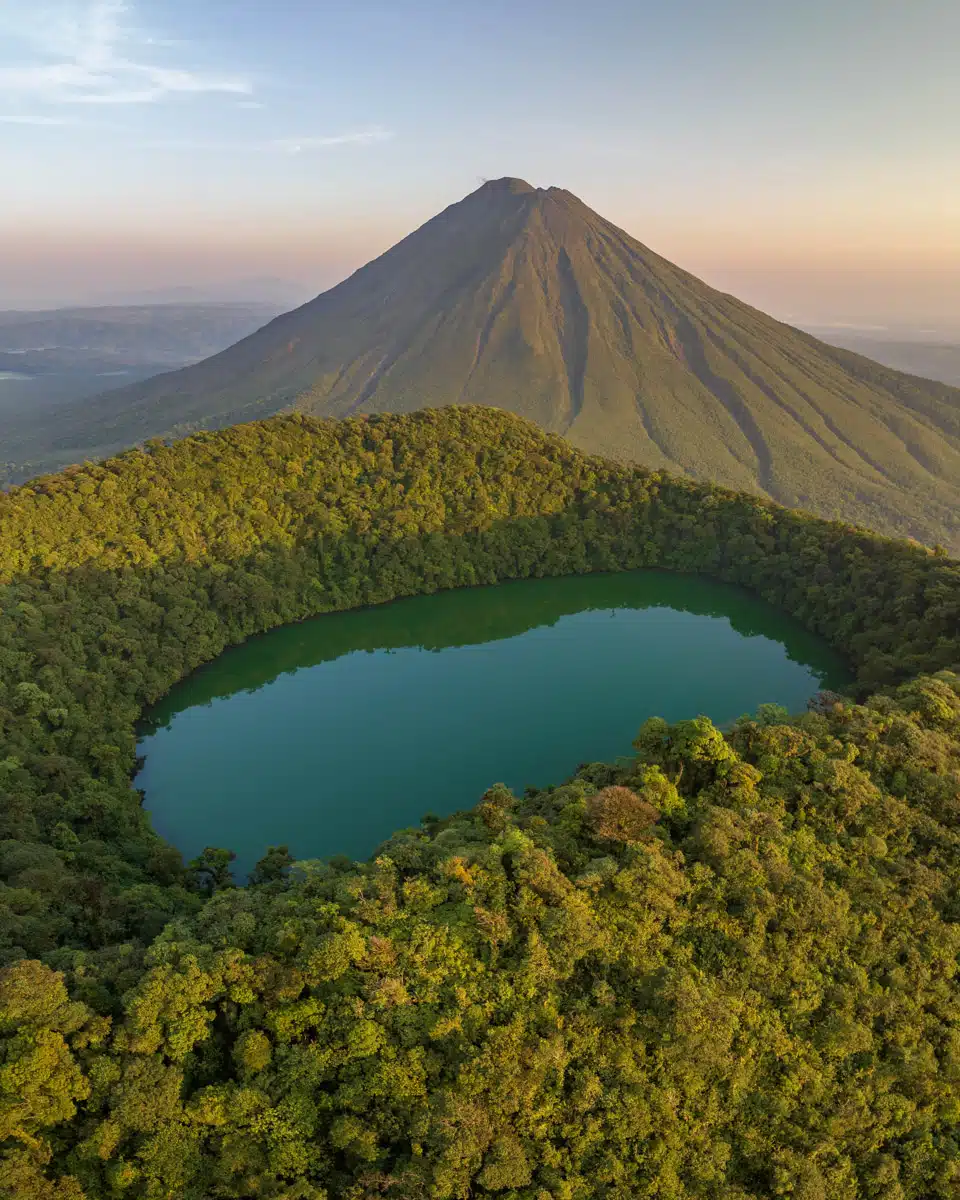
OK, it’s time to hit the road. We’re getting your incredible Costa Rica trip itinerary moving with a 3-night trip to Arenal and La Fortuna to get up close and personal with the 5,436-foot volcano and its beautiful surrounds.
Arenal is an area prime for adventure activities like whitewater rafting and lush jungle hikes. It’s also perfect for relaxing, and I quickly fell in love with the volcanic hot springs around the area.
Here’s a look at a few things you need to prioritise during your days in Arenal and La Fortuna.
Things to Do in Arenal & La Fortuna
Hike Arenal Volcano
Ok, you technically can’t hike to the top, but the two trails at Arenal 1968 Volcano Trails offer scenic views of the mountain and Arenal Lake from up close. You can even see the lava tracks dating back to the 1968 eruption.
This 2.9-mile hike is pretty easy, only gaining around 500 feet of elevation throughout. That said, there is some climbing involved, and I broke a sweat pretty quickly as temperatures are frequently over 26.6°C (80°F).
Photograph Lake Arenal
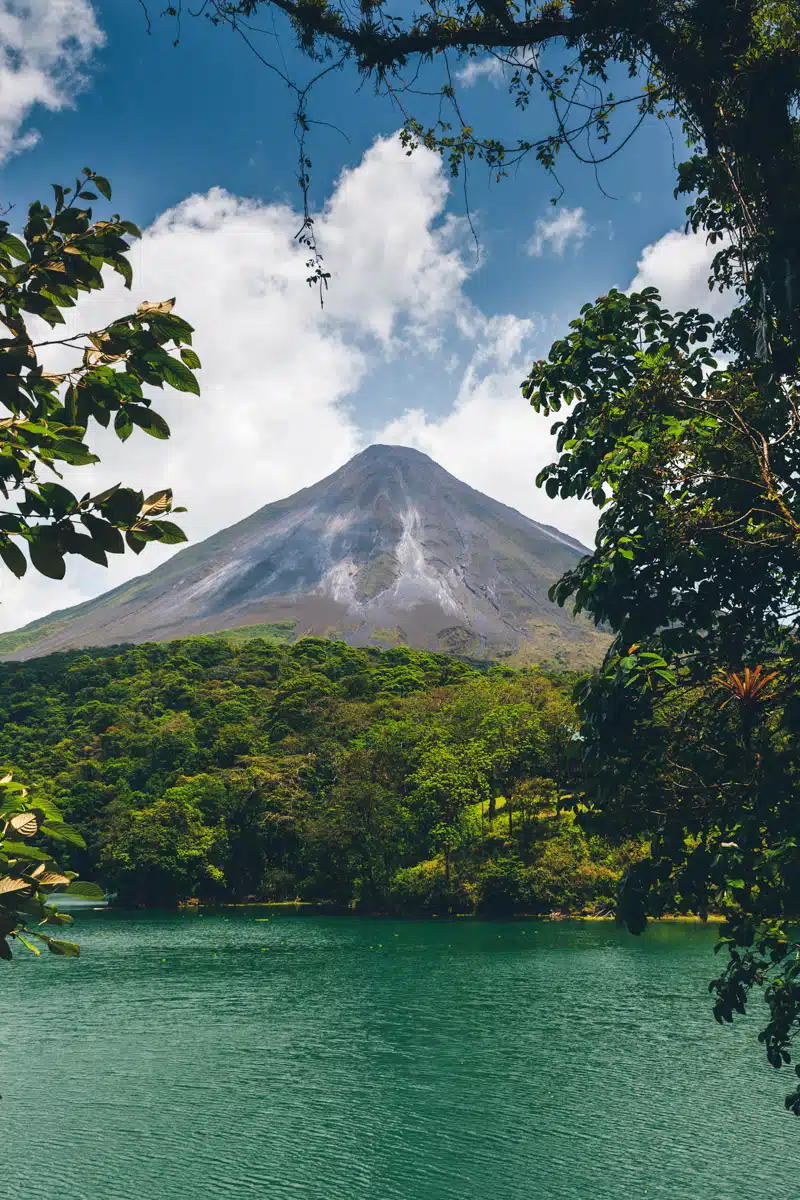
When you’re done hiking, take Ruta 936 South for about 30 minutes. Here, you’ll find Mirador Lake Arenal.
This is one of the best vantage points in the park, so be sure to bring your camera and a good lens to Costa Rica’s largest lake.
You’ll capture stunning views of nearby Arenal Volcano from the easternmost section of the lake.
Walk Across the Hanging Bridges
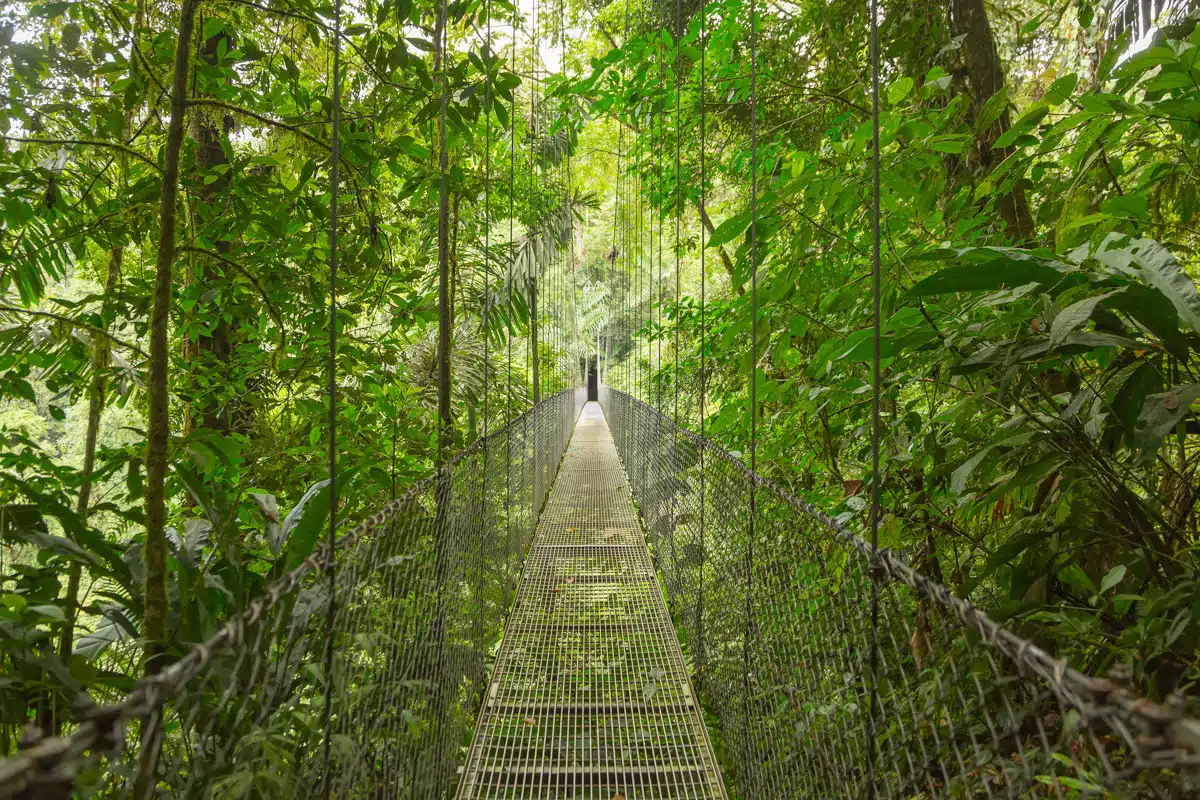
Visiting the Místico Arenal Hanging Bridges is a must when you visit Arenal. The private nature park northwest of Arenal Volcano is home to 15 bridges across 3 kilometres of lush jungle forests.
You can go on a guided tour or on your own, which fits nicely into a 3-day visit to Arenal. If you choose the latter, you can really take your time and explore every corner of the park.
Místico has a lot to look at inside and out. You can see Lake Arenal, Arenal Volcano, and it features both highland and lowland rainforests. If you’re scared of heights, you may not want to look down, as the tallest suspension bridge reaches 45 metres (148 feet).
Swim at Fortuna Waterfall
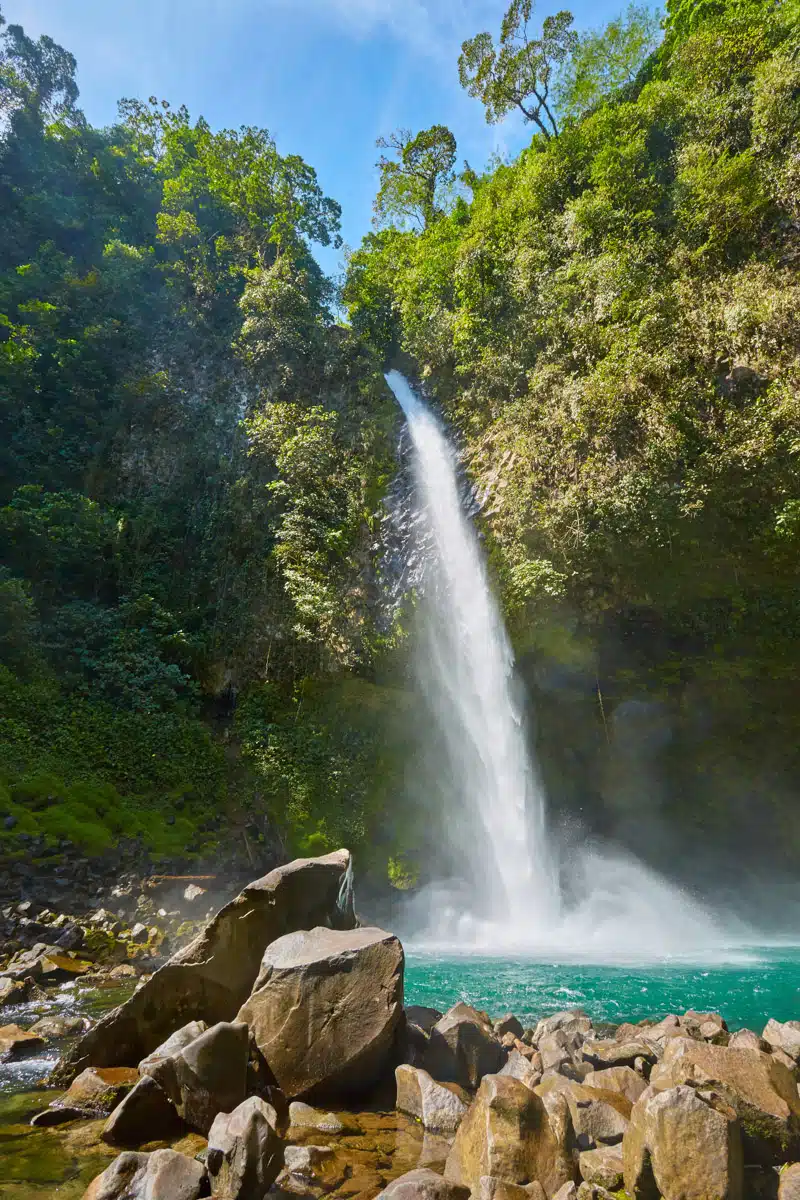
Fortuna Waterfall is a true highlight when visiting Arenal and a beautiful way to spend the second day of your trip to Fortuna.
My first piece of advice is to start your day early and get to the office before 7am After paying $18 for a ticket, you can take the hike into the park.
The hike is only about 45 minutes round trip, but you’ll want plenty of time in the water. Here, you can splash around the natural pool while looking up at the massive 76-metre (246-foot) fall above.
Chill Out in the Hot Springs
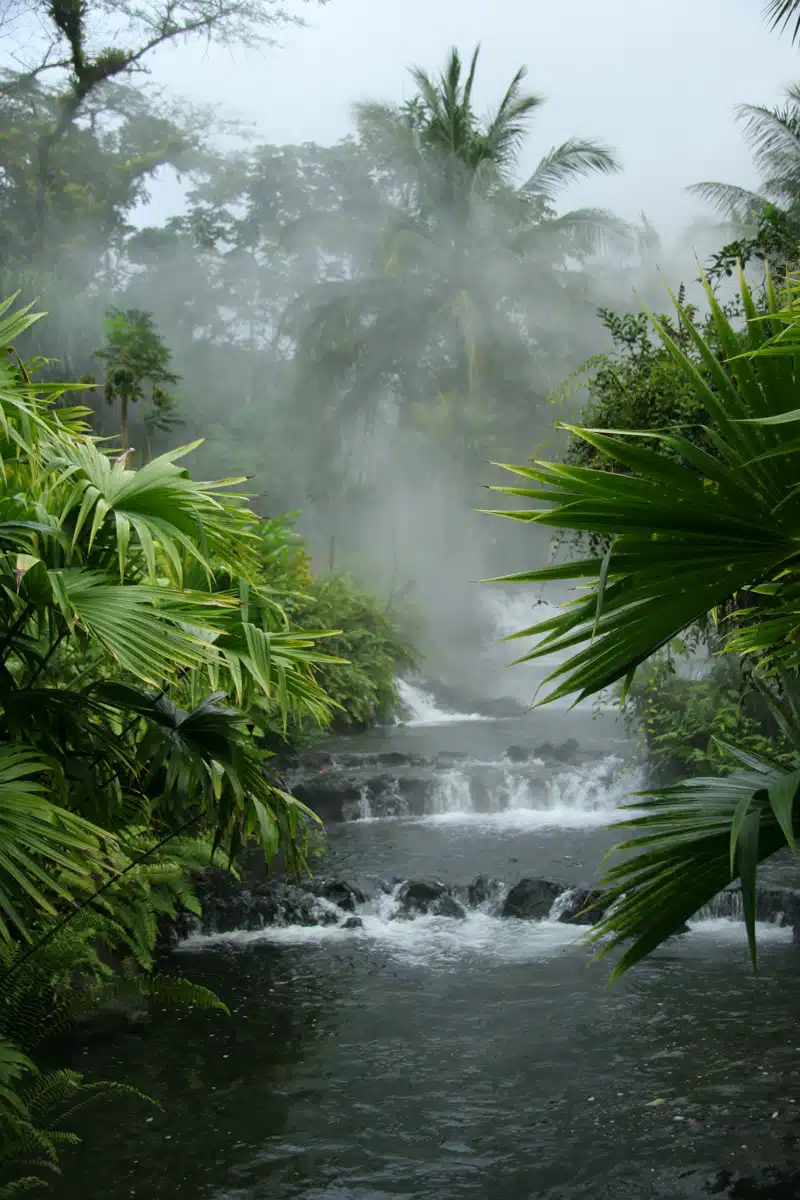
Baldi Hot Springs is one of my favourite places in Arenal. Why? You can choose from 25 different volcanic pools to soak your weary bones after a couple of days of hiking around Arenal.
It costs $30 per person and is open from 9 am to 10 pm, giving you all the time you need to relax and soak in the mineral-rich waters in style.
The drive from the waterfall is only about 10 minutes, providing enough time to take a slight detour back to your hotel if you want to freshen up.
Whitewater Rafting on Balsa River
Meet in town on your final day in La Fortuna before embarking on a day of white water rafting down the Balsa River.
Whether you’re a beginner or have a few trips under your belt, the class II and III rapids are sure to liven up your day. I didn’t get a chance to go on my most recent visit, but I’ve heard that you splash past a waterfall and cruise down 10 kilometres (6 miles) on a total thrill ride.
Getting from San José to Arenal & La Fortuna
From San José you’ll want to hire a car or take a bus to La Fortuna, which will be your home base when visiting Arenal.
On my most recent trip I rented a car, which cut the journey down to 3 hours. But your itinerary allows you to take a private or public bus and still have plenty of time to see the top landmarks.
If you don’t drive,I suggest booking with Interbus, which offers smaller shuttles for only $65 per person. Bonus points for AC.
Suggested Stay
The Royal Corin Thermal Water Spa & Resort
This adults-only luxury resort offers stylish rooms and suites with ridiculously close views of Arenal Volcano.
I loved that it has free parking (since we drove to La Fortuna), and the outdoor thermal pool is an authentic touch that is perfect for relaxing between hikes and adventures.
Costa Rica Itinerary Day 5-6: Monteverde
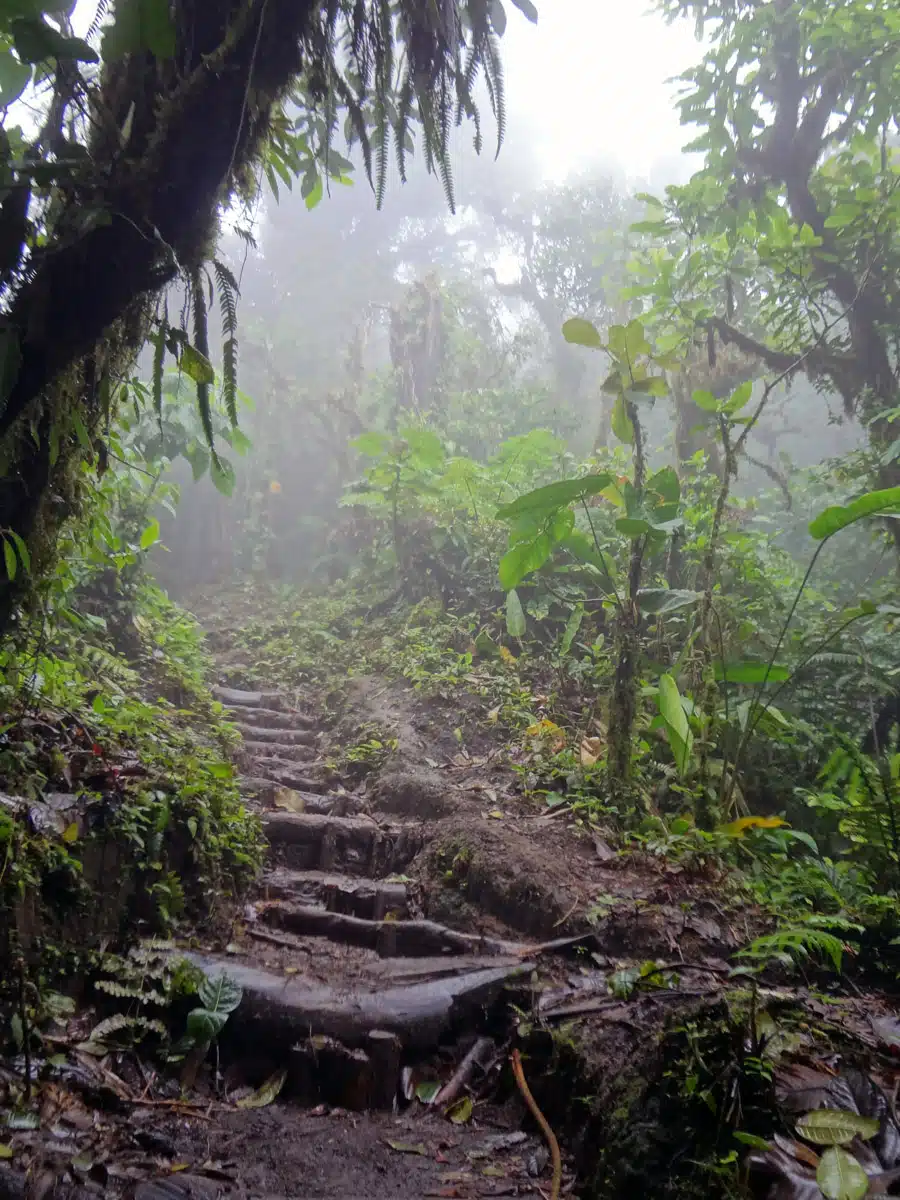
Now it’s time to discover one of Costa Rica’s hidden gems, Monteverde. Explore an endless stretch of misty rainforest and wildlife along the continental divide over 4,5000 feet above the Pacific Sea.
Located south of Lake Arenal in the Cordillera de Tilarán Mountains, it offers incredible opportunities to see wildlife and plantlife up close. It’s popular for bird watching, and jungle hikes may reveal rare animals like howler monkeys and jaguars.
Things to Do in Monteverde
Walk Above the Cloud Forest at Monteverde Cloud Forest Biological Preserve
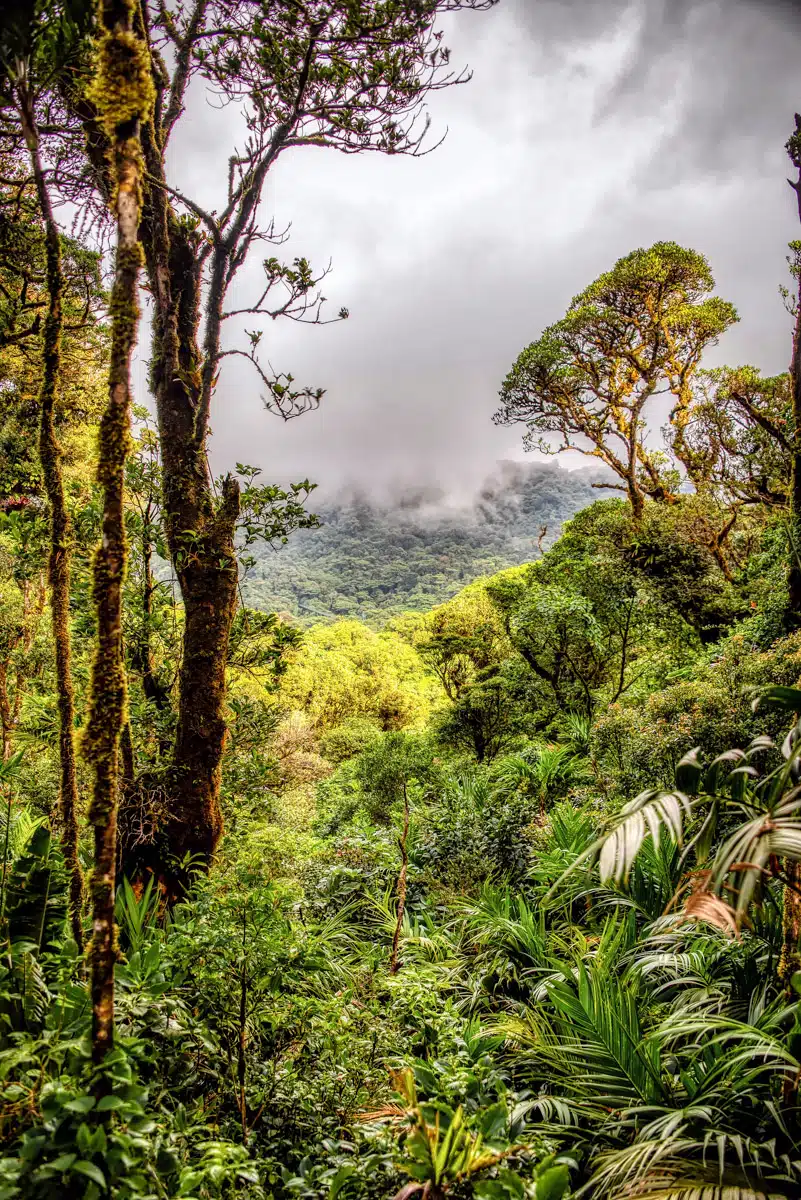
The main event when you visit Monteverde is exploring the 10,500 hectares of Monteverde Cloud Forest Biological Preserve. It’s well-known for its suspension bridges, with 8 of them leading you through incredible wildlife trails above ground.
Since 1972, scientists and a group of Quakers have helped protect this land to learn more about the world’s biggest cloud forest.
You can spend a half day walking the park, which consists of around a half dozen different trails that take 5-6 hours to complete.
Monteverde Orchid Garden
On your second day in Monteverde, visit the Monteverde Orchid Garden in the nearby town of Santa Elena.
The park is home to one of the world’s largest orchid collections, with over 450 varieties in total. Tickets are $17 and allow you to explore the mesmerising flowers in their native Costa Rica.
The founder, “Papo,” began collecting orchids that had fallen on the ground in the forests and slowly brought them to the park. Now, over 100 are in bloom each day in the indoor and outdoor gardens.
Birdwatching at Curi-Cancha Reserve
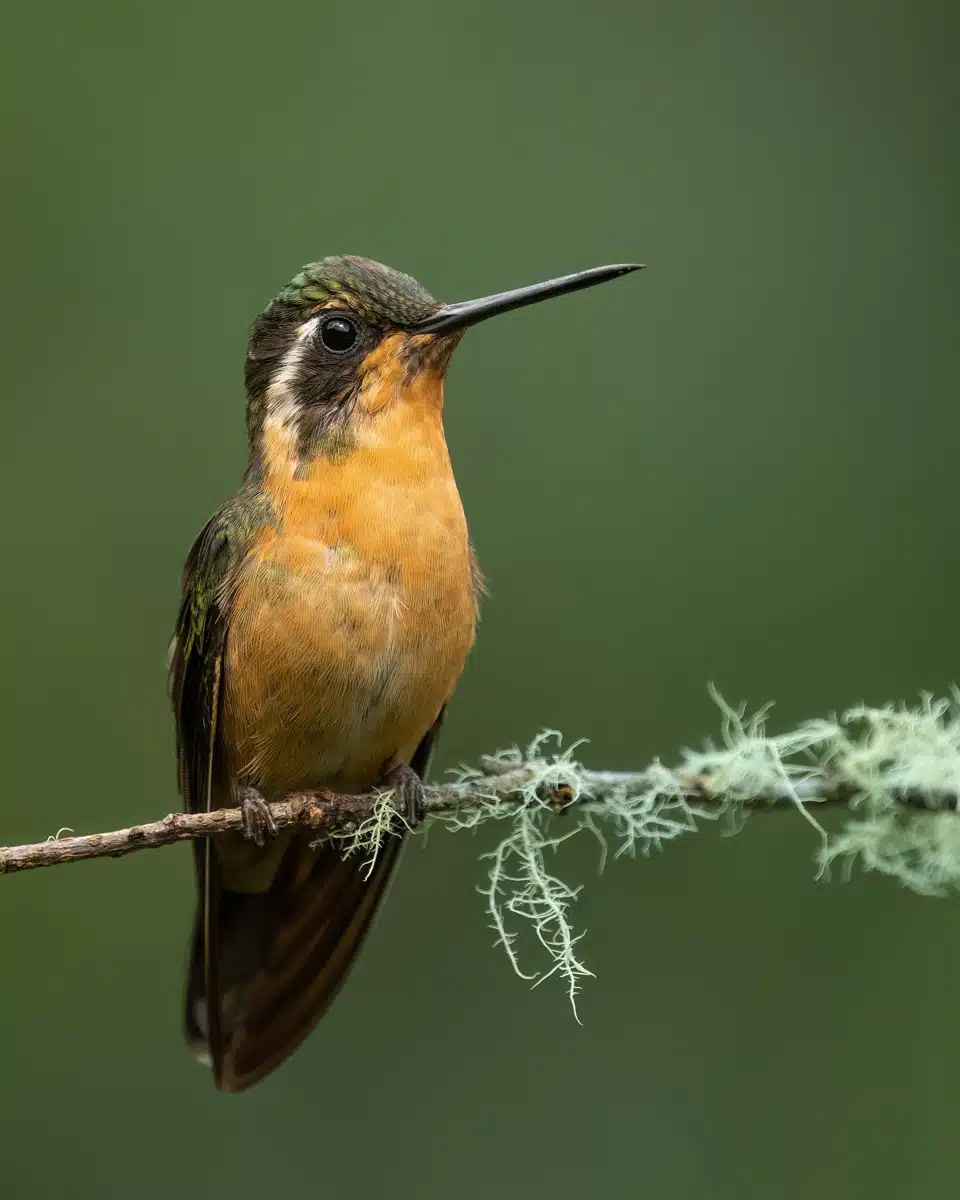
If you want to spot the most elusive birds in Monteverde, Curi-Cancha Reserve is the perfect place to do it. 96 hectares of vibrant virgin and secondary forests are home to hundreds of birds, along with monkeys, wildcats, and sloths.
You can visit on your own for just $20 (₡10,225) or book a guided tour. My advice? I found it’s much easier to spot birds in the jungles when you have someone familiar with their habits and calls guiding you (and that stands for all the nature-led activities in Costa Rica).
You can find rare birds like the three-wattled bellbird or the stunning resplendent quetzal with its bright green and red feathers.
Wildlife Viewing At Night
Even though you’re walking the same paths you did during the day, I urge you to add this to your itinerary when you visit Montverde.
Taking a nighttime tour gets you up close and personal with the abundant wildlife when many of the nocturnal creatures come out. You may see two-toed sloths, armadillos, frogs, and snakes staying up past your bedtime when you visit Monteverde at night.
Getting from Arenal to Monteverde
You can drive or take a shuttle from La Fortuna to Arenal on your Costa Rica itinerary.
I drove and it took about 3 hours, travelling up and around Lake Arenal. Because Children’s Eternal Rainforest separates the location, you take Ruta 142 northwest before dropping back down on Ruta 145.
You can also book a combination van and boat tour, which allows you to actually float across Arenal Lake for only $39 door-to-door. Winner.
Suggested Stay
Hotel Belmar
This luxury property features upscale accommodations with beautiful hardwood walls, floors, and furniture to match.
Room rates include breakfast and parking on-site, making it a great jumping-off point for exploring Monteverde.
Costa Rica Itinerary Day 7–9: Manuel Antonio
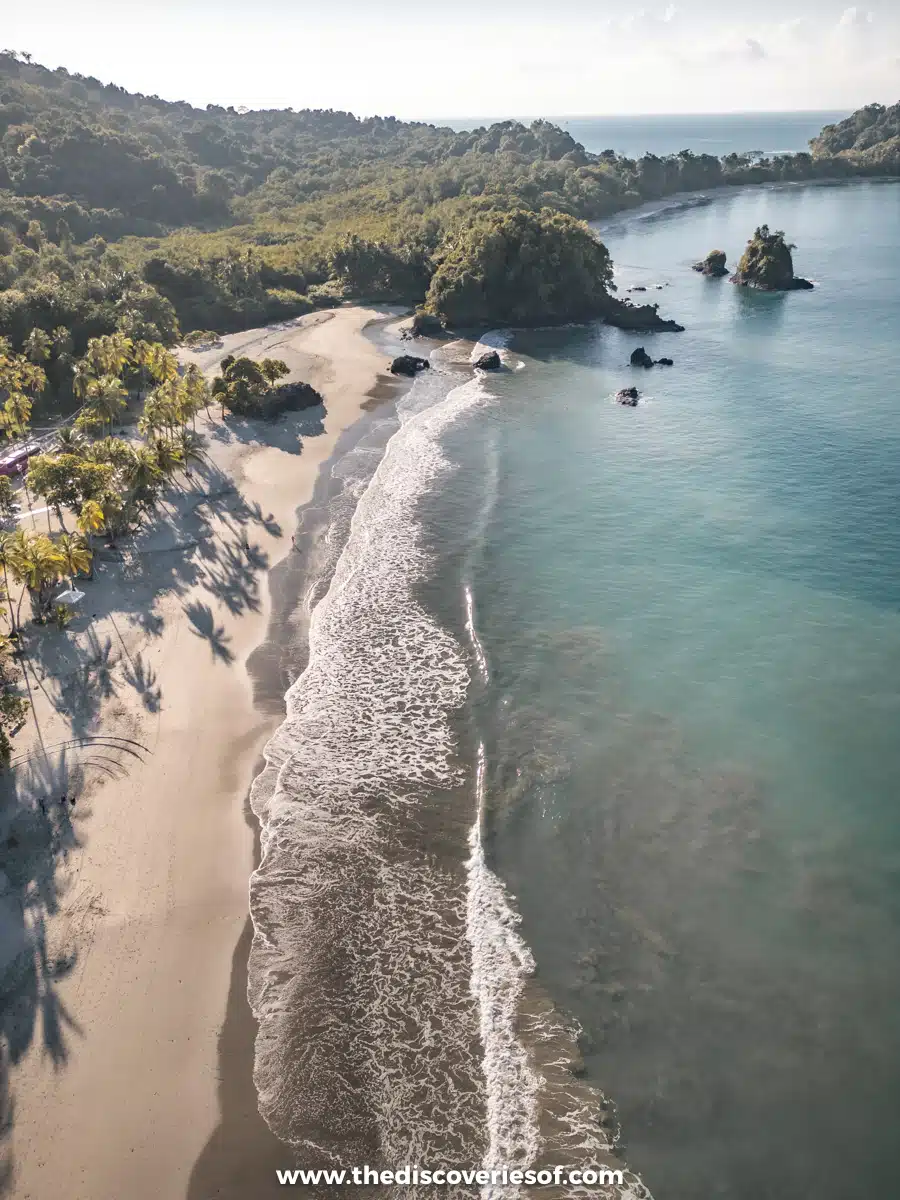
On my most recent research trip to Costa Rica, I finally got to explore Manuel Antonio.
Sure, you’ve heard of the national park (if you haven’t, get ready to experience one of the most biodiverse areas in the country). But while admittedly a bit confusing, Manuel Antonio is also the name of the nearby town.
It’s full of beaches, boutique hotels, and charming indoor/outdoor restaurants overlooking the jungles and ocean.
Grab your beach blanket, slather on the sunscreen (and bug spray) and adventure to Manuel Antonio for the next leg of your Costa Rica itinerary.
Things to Do in Manuel Antonio
Chill Out at Playa Espadilla
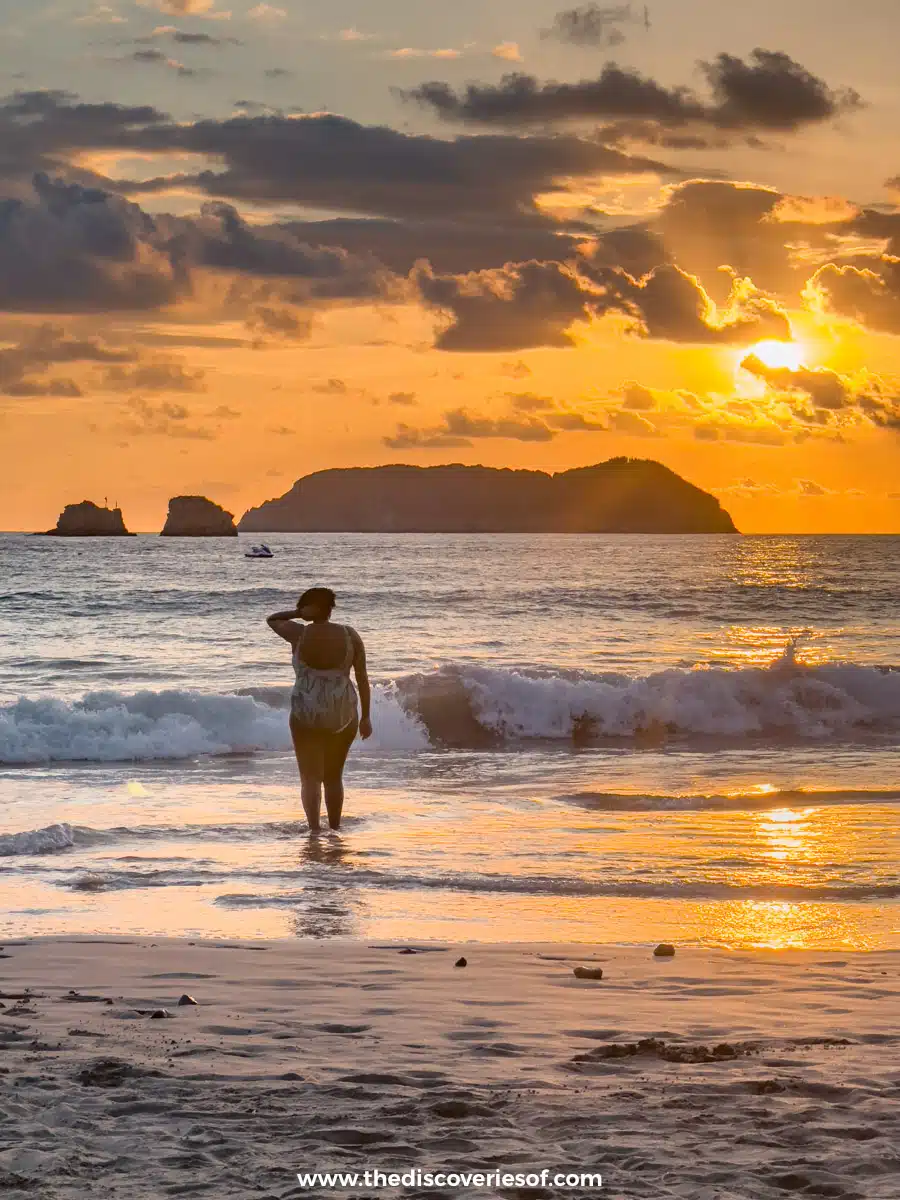
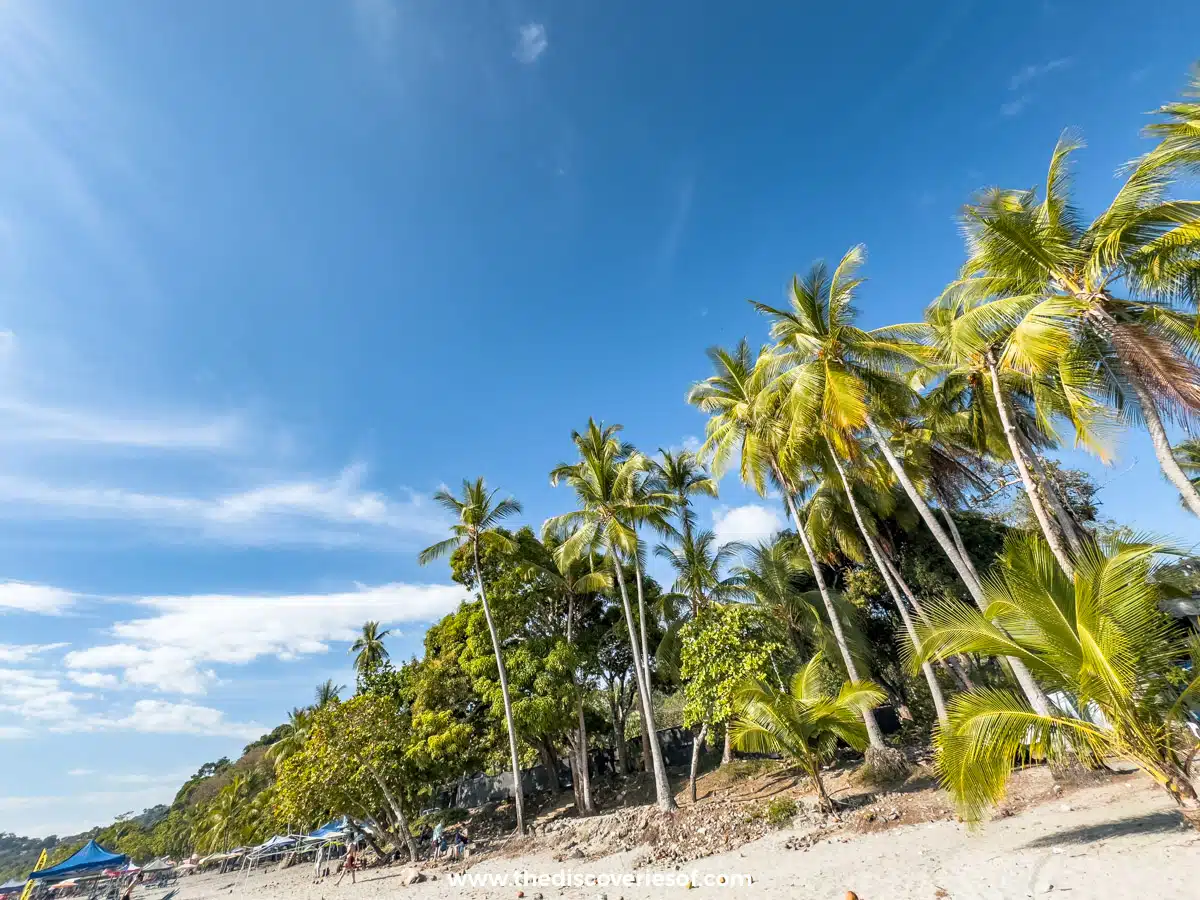
The best way to get to know Manuel Antonio is to just walk around and check out the airy restaurants and splendid beaches between the jungle and coasts.
Playa Espadilla is a perfect example of everything Manuel Antonio offers, boasting some of the best beaches in Central America. Whether you’re keen to lounge on a chair with an umbrella ($25 each) or want to try your luck at surf lessons, there are lots of amenities around to make the most of the beach.
Top Tip
Going later in the day allows you to stay for sunset. No joke, this is easily one of the most gorgeous sunsets I’ve seen anywhere in the world. Eat your heart out, Oia.
Snorkel at Playa Biesanz
Playa Biesanz is one of those rare treats that’s a hidden gem hiding in plain sight. Located just up the road from the much larger Playa Espadilla, this is the perfect way to start your first day in Manuel Antonio.
If you came to snorkel, this is your place. You can rent gear on the beach or free dive to see colourful fish and sea turtles below.
Manuel Antonio National Park
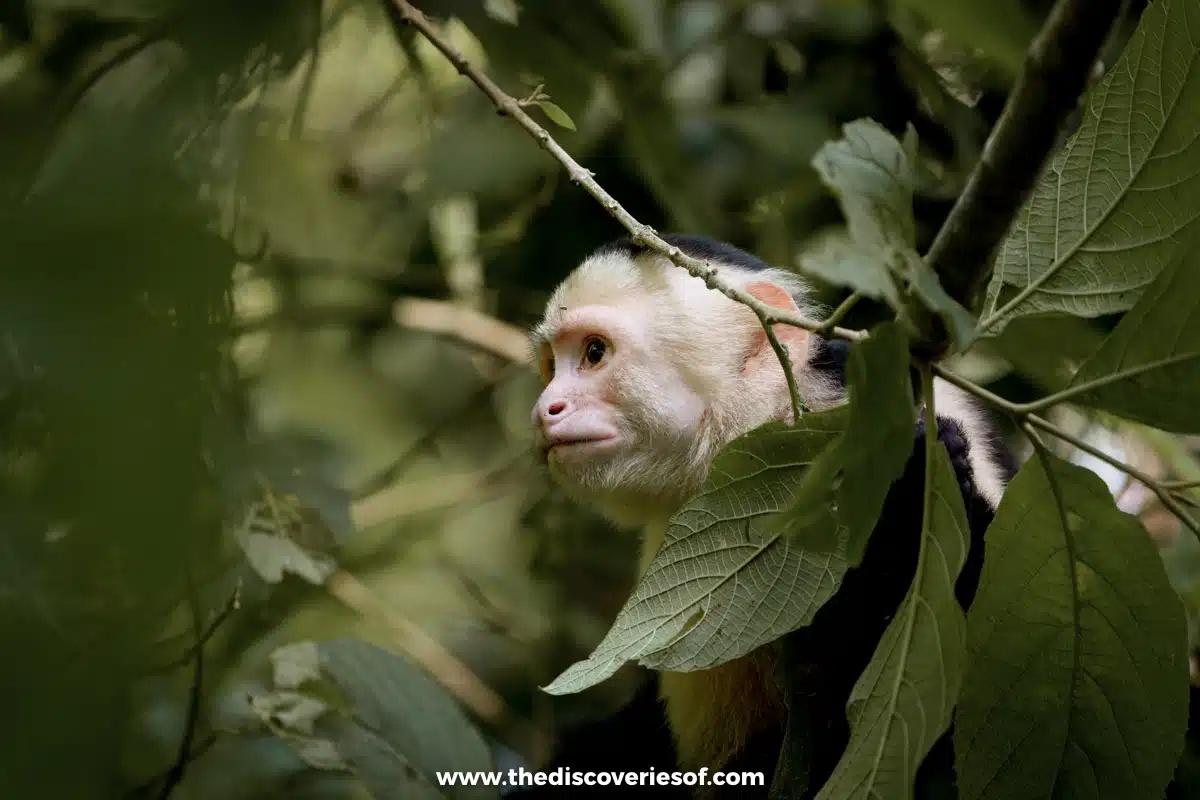
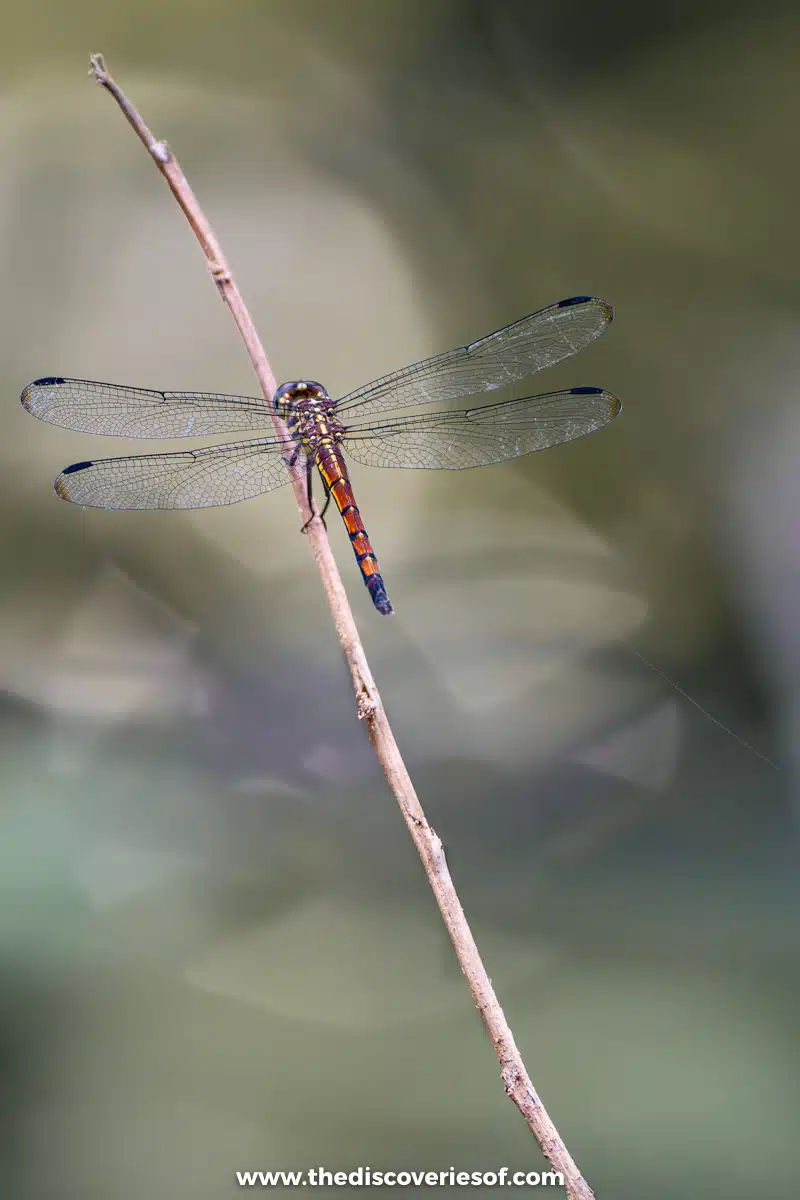
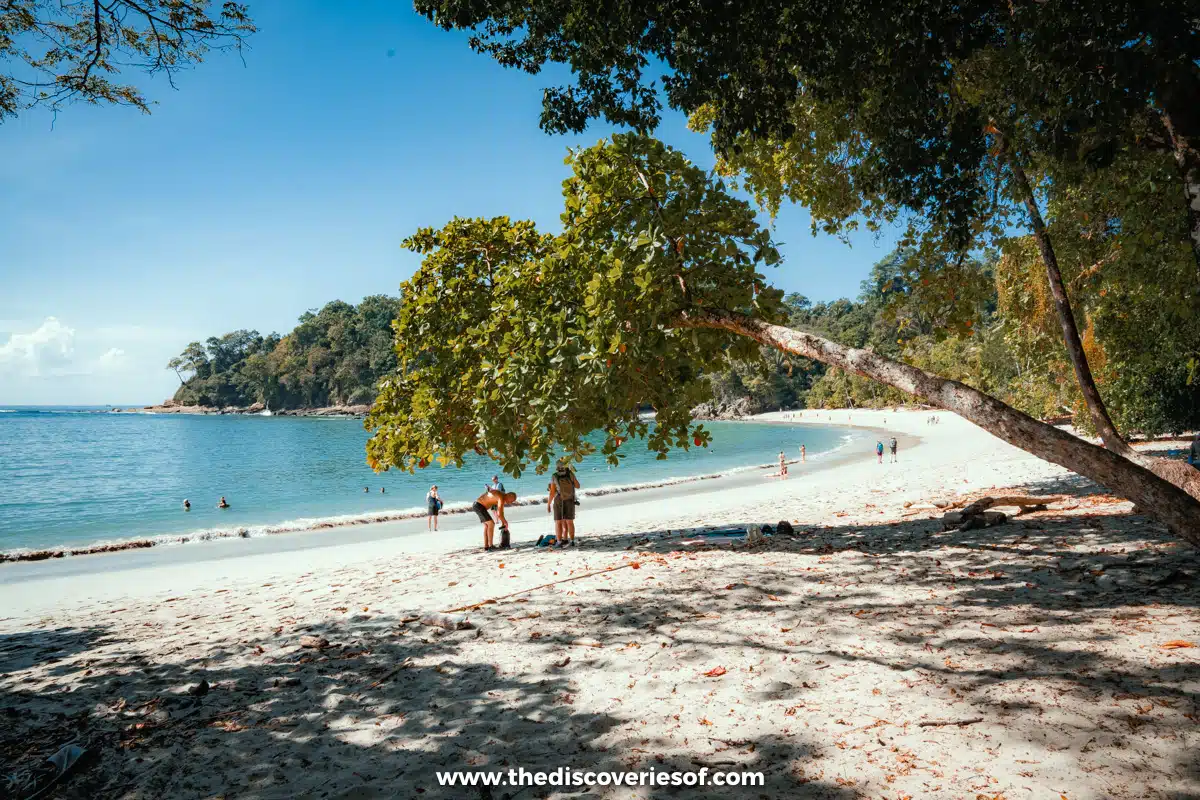
When you visit Manuel Antonio, you’ll want to dedicate the better part of your second day to exploring the national park.
Start your day at the gates at 7 am for the best chance at seeing the two-toed sloths, 4 types of monkeys, and hundreds of birds when they’re at their most active.
You don’t need a guide to visit, but borrowing their telescope and picking their brains for fun facts is well worth the extra money. It’s around $20 for a standard ticket and $70 with a guide, but that price includes admission, transportation, and their knowledge of the park.
After the tour, you can break off on your own, which is a perfect opportunity to laze at the popular Manuel Antonio Beach or (pro tip) walk over to the less crowded Playa Espadilla Sur.
Tickets
Be sure to book your tickets way in advance. It’s a busy park (to say the least), so you’ll want to secure your timed entry to ensure you hit the trail before larger crowds arrive and tickets frequently sell out days in advance during high season.
Dinner at Food Truck En Todos
When you’ve had enough fun in the sun, do stick around for what was one of my favourite discoveries near the park.
A bright yellow school bus with a sign that reads “Magic Bus,” En Todos serves up no-nonsense cuisine in an al fresco setting by Manuel Antonio Beach.
Order a set of tacos for around $10-$12 (₡5,000-₡6,0000), have a beer or two, and just chill out. That’s what you’re here to do, isn’t it?
Getting There
Walk up the beach toward Espadilla Beach, and you’ll find it about halfway.
Rainmaker Conservation Park
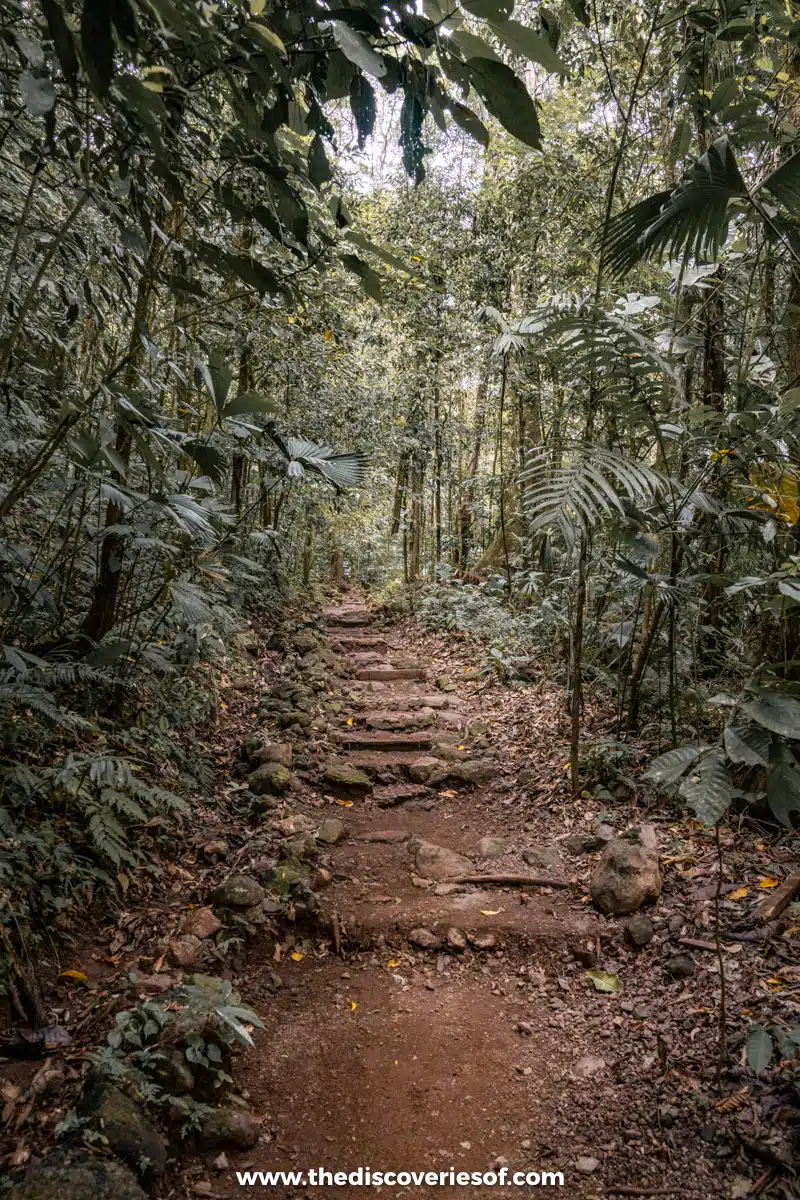
On your last day in Manuel Antonio, take a quick day trip to Rainmaker Conservation Park to discover what I consider to be one of Costa Rica’s best-kept secrets.
When you arrive at the private nature reserve, you’ll pay $22 to enter. Once inside, prepare to be blown away.
1,500 acres of lush jungle forests is home to hundreds of birds, butterflies, and reptiles. I saw parrots, toucans, and loads of other wildlife in the time I was there. But what makes it really special is that much of your hike is along a canopy walkway, where you are viewing nature from the top of the rainforest trees.
Bring your camera and pack your swim trunks for the natural pools that form along the waterfalls.
Getting There
Take Ruta 34 northeast of town, about 40 minutes.
Dinner at Cafe Agua Azul
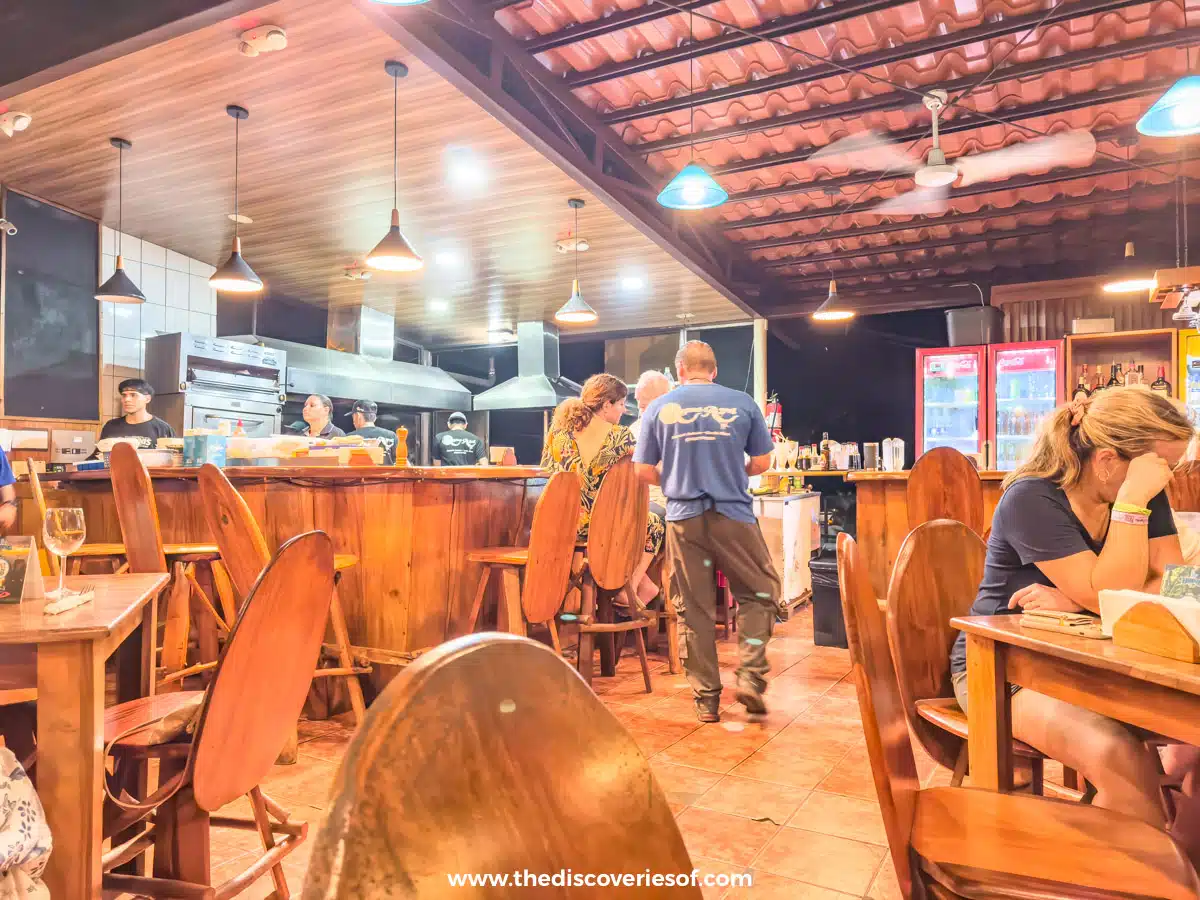
Quepos is the main village that’s essentially an extension of greater Manuel Antonio. There are lots of restaurants to choose from, but trust me, you should head to Cafe Agua Azul.
The stylish restaurant has plenty of space, but you want to reserve a seat on the patio if you can.
I loved everything we tried at the restaurant, with plenty of delicious seafood and a plantain stack (think freshly fried and topped with guac) that is a must-order.
Cocktails are delicious, and I had one of the best margaritas I’ve had in a long time.
Getting to Manuel Antonio
The easiest way to Manuel Antonio is to drive from Monteverde. If you don’t hire a car, you can take a private shuttle with AC (highly recommended) for around $75 (₡38,350) per person.
Suggested Stay

I stayed at La Vela Boutique Hotel and think it’s really a hidden gem.
Tucked away just steps from the national park entrance, you’ll enjoy cosy beds, private terraces, and a great breakfast with excellent pancakes. It’s also close to the main beach, Playa Manuel Antonio, so bring your swimsuit.
Costa Rica Itinerary Day 10: San José
After a full itinerary checking out Costa Rica’s best national parks, wild jungles, and pristine beaches, it’s time to head back to San José.
Spend a few hours scoping out colonial architecture and visiting a bustling marketplace before heading to the airport.
Things to Do in San José
San José Central Market
San José Central Market is a great place to shop for souvenirs to take home on your last day in Costa Rica. It also offers a peek into a market that’s nearly 150 years old and has been a focal point of local culture and cuisine.
Located just a couple of blocks from the fountains and pavilion at Parque Central de San José, the long indoor market has around 200 vendors selling anything from snacks to souvenirs.
Arrive hungry and try gallo pinto (a seasoned dish of rice and beans) and some fresh fruit to start the day. Then, browse for clothing and trinkets before trying a scoop of ice cream at the legendary La Sorbetera de Lolo Mora. Trust me.
Top Tip
The market opens a bit later in the day than many, opening at 11 a.m. most days of the week (10 a.m. on Sundays).
Pre-Columbian Gold Museum
Browse through hundreds of gold artefacts at this subterranean museum below Plaza de la Cultura.
The Pre-Columbian Gold Museum has a beautiful collection of jewellery and artwork, most of which are made with ancient gold. Look closely at the details of each piece, which often have people or animals etched into the precious metal.
You can also see replicas of an indigenous village and royal grave, offering a glimpse into Costa Rica’s ancient past.
National Theater of Costa Rica
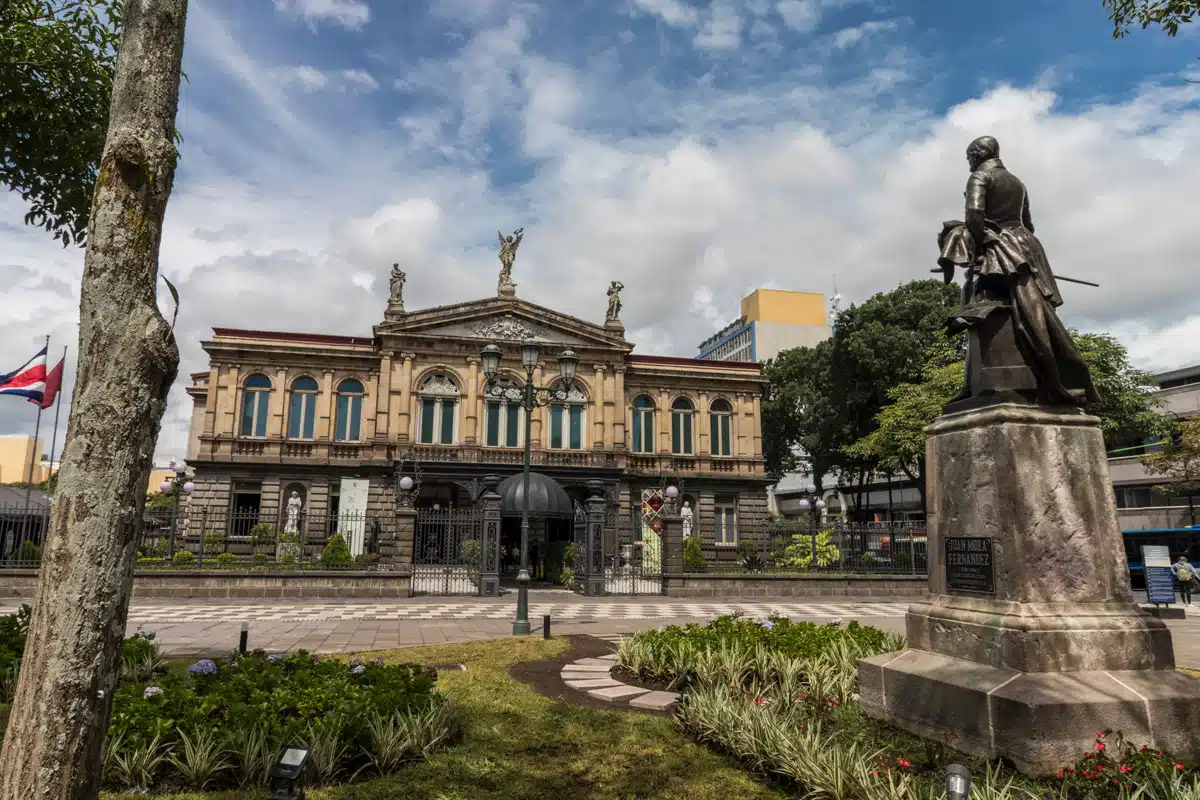
Wrap up your trip to Costa Rica by walking over to the National Theater of Costa Rica, which is also in the Plaza de la Cultura. The Neoclassical building looks much older than it is, with its imposing facade and ornate theatre inside.
Walk around and see the ridiculously ornate decor with gold-trimmed walls, extravagant chandeliers, and murals covering the ceiling.
If you have time to see a show, I highly recommend booking a ticket to sit in the beautiful seats for a concert or ballet performance.
Getting to San José from Manuel Antonio
Fly from Quepos (XQP) to Juan Santamaría International Airport in San José (SJO) on Sansa Airlines. A round-trip ticket ranges from $200 to $250 (₡102,850 to ₡128,560) and takes about 30 minutes each way.
If you’d rather drive, it takes about 3.5 hours from Manuel Antonio back to San José.
Suggested Stay
After a week of adventure, a hot shower, soundproofed room, and breakfast buffet is exactly what you need. Gran Hotel Costa Rica all the above, just steps from San Jose’s best museums and attractions.
Have More Time? Add These To A 14-Day Costa Rica Itinerary
Planning a Costa Rica itinerary for 14 days? Here are two incredible additions to round out your trip.
Drake Bay
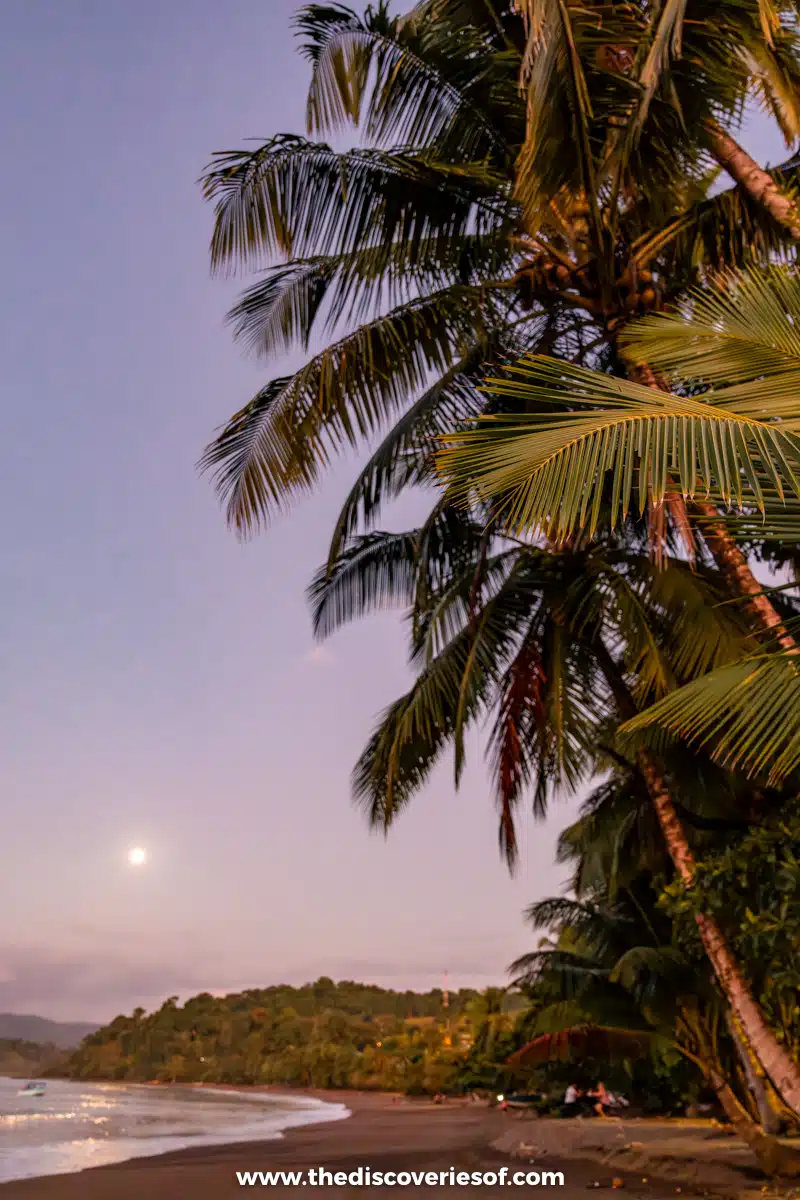
Drake Bay is best known as the launching point for Corcovado (more of that below), but it’s also a charming destination in its own right.
Pull up from the dusty dirt roads to the colourful houses perched on the rocky jungle shores of the Pacific Ocean and you’ll immediately feel Pura Vida all around you. Drake Bay is not only a great place to see Corcovado, but you can experience a few of the Osa Peninsula’s hidden gems.
If you only have time for one activity besides lazing on the beach or enjoying immaculate sunsets from bars and restaurants along Playa Colorada, I have just the place.
Take a guided tour to Isla del Cano Biological Reserve and see why I can say without a doubt in my mind it’s the best snorkelling destination I’ve ever been to. No sooner did we plop off the boat and into the water, shoals of fish surrounded us, turtles (so many turtles!), and even the occasional shark.
Drake Bay also offers one of the best hidden beach hikes anywhere in the world. Take the six-hour out-and-back hike to Playa San Josecito to see colourful birds, lively monkeys, and crystal clear waters at the white-sand beach.
Corcovado National Park
Corcovado National Park is a bucket-list destination along the Osa Peninsula in southwestern Costa Rica. It’s teeming with wildlife and accounts for a staggering 2.5% of the world’s biodiversity.
If you have an extra couple of days, don’t miss a chance to visit the national park. You’ll need to do a lot of planning ahead, however, as the national park caps the visitor limit to around 300 per day, and you can only enter the park on a guided tour from one of the six ranger stations.
From Drake Bay, your best bet is to schedule an overnight or day trip with Sukia Travel. They offer a chance to see the park with local guides who specialise in sustainable, eco-conscious tours.
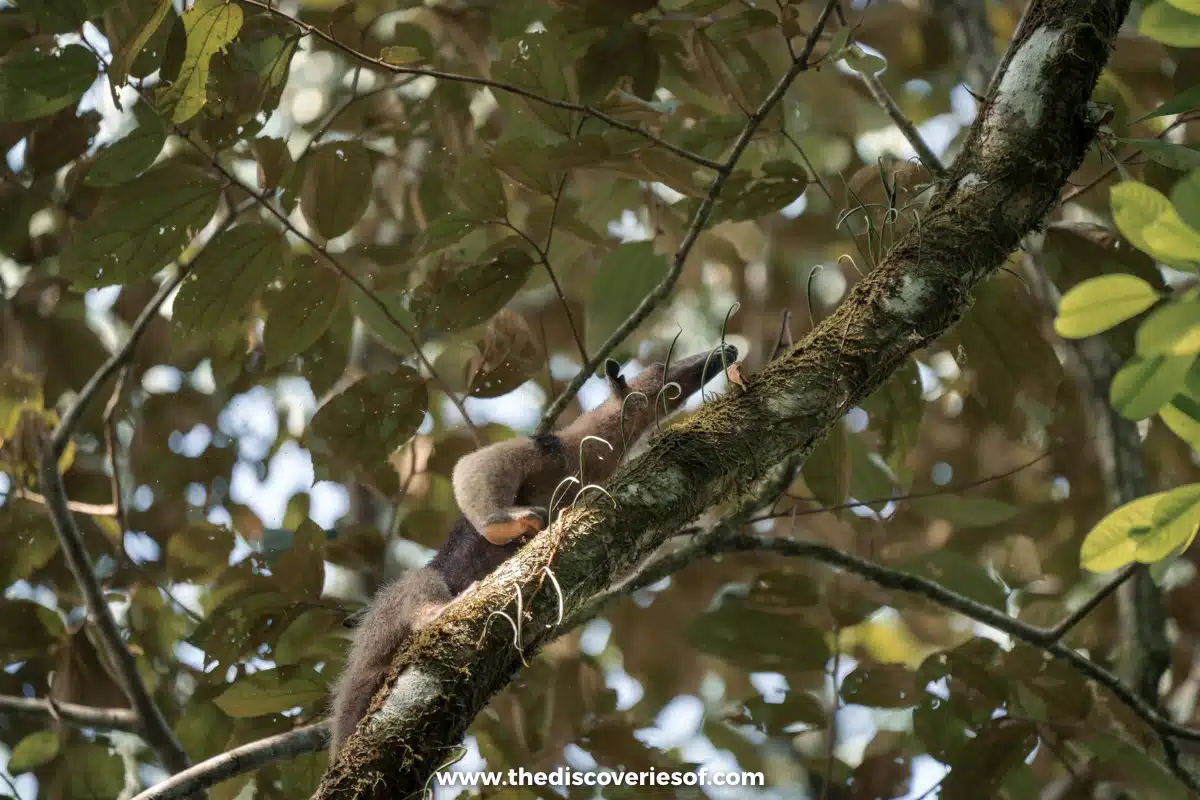
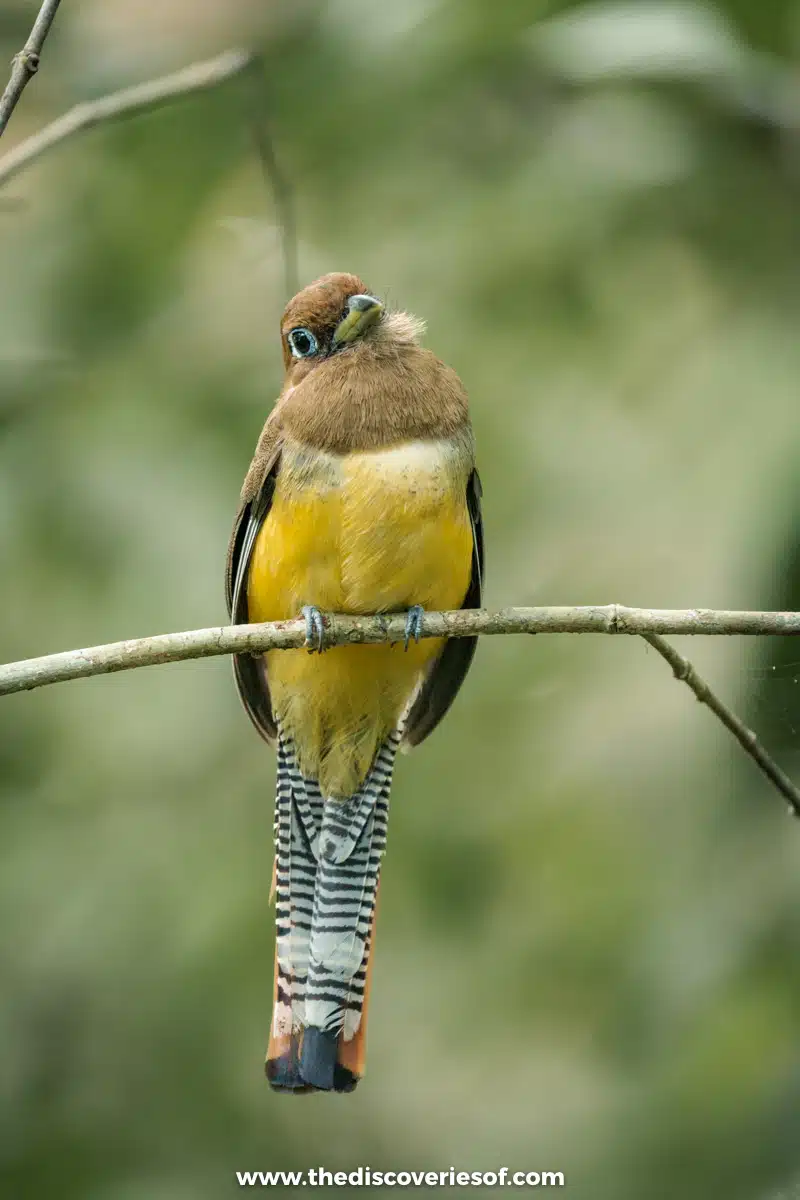
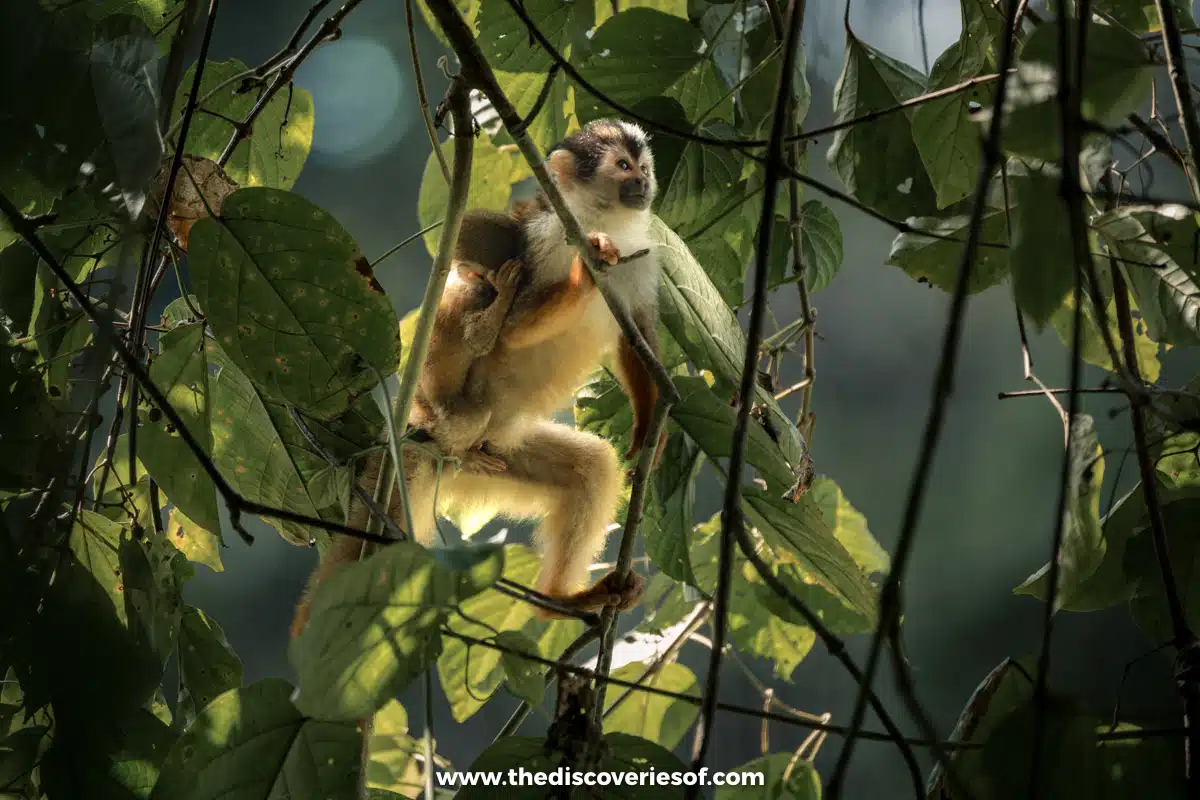
The amount of wildlife you’ll see from the first few minutes is jaw-dropping. I saw Baird’s Tapir, two-toed sloths, toucans, and peccaries (all on the first day).
I went on a three-night tour, during which we hiked around Sirena Station and from San Pedrillo to Los Planes. It was epic and gave us a chance to see some of the park’s more remote sections, like Los Planes.
But if you only have the time for a day trip, it’s still totally worth doing. You can schedule a one-day visit to Sirena Station, where you’ll get a chance to experience many of the most sought-after wildlife sightings and return to Drake Bay on the same day.
Handy Tips for Planning Your 10 Days in Costa Rica
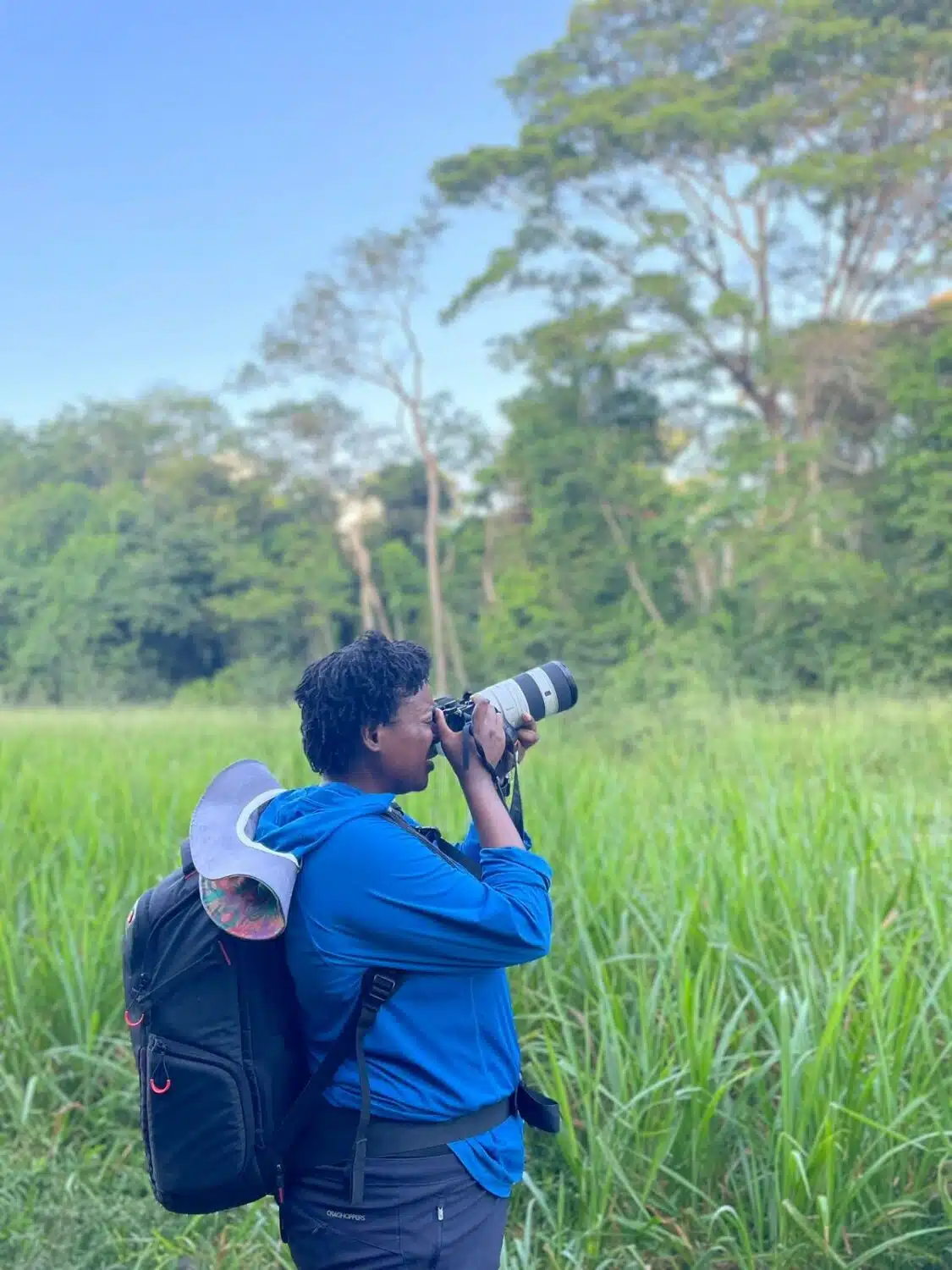
Top Tips
- Add travel insurance before your visit for any unexpected medical bills or delays.
- Take caution walking around at night. Pickpocketing and robberies can occur, especially if you walk away from touristy areas.
- Make your hotel reservation ahead of time especially in the dry season(December to April). Popular national parks, landmarks, and hotels fill up fast.
- When you hike through national parks and private nature reserves, be aware of your surroundings. Venomous snakes, Africanized bees, and poison dart frogs all live in the jungles so stay on the paths and don’t divert from the trail.
- Costa Rica beaches are beautiful, but some dangers do lurk in the waters. Wear a rashguard to prevent jellyfish stings, and always look out for sharks and crocs when the tides come into lagoons.
- Bring a strong bug spray with DEET and anti-insect sleepwear for the many bugs you’ll encounter.
- Get a 4×4 vehicle if possible and try to avoid driving at night.
- Carry cash, especially when you visit remote areas. Always have both USD and Costa Rican Colones on you as some places prefer one or the other.
What to Pack
Visiting Costa Rica means you’re going to spend a lot of time outside. Prepare for days hiking in the jungle or swimming at the beach, and pack the following clothing and supplies.
- Travel backpack with rain cover
- Small daypack (choose one that fits in your main backpack)
- Swimwear
- Sunscreen
- Quick dry towel
- Sunglasses (during the dry season)
- Hats
- Lightweight clothing for travel, hiking, and daily use
- Waterproof jacket
- Anti-insect sleepwear
- Comfortable trainers for airports, cities, and towns
- Water shoes or sandals (transfer can get your feet wet)
- Water-resistant hiking boots
- Hiking socks
- Hiking poles (for Corcovado beyond Sirena Station)
- Reusable Water bottle – I recommend a two-litre water bladder that can fit inside your daypack
- Small first aid kit with anti-itch cream and antibiotics
- Bug Spray
- Basic toiletries and feminine hygiene products
- Camera with a zoom lens and extra memory
- Electrical chargers and a universal travel adaptor
- Binoculars (for national parks)
- Noise-cancelling headphones or earplugs
- Head torch (for hiking early and late in the day)
- Padlock for lockers at national parks
Best Time to Visit
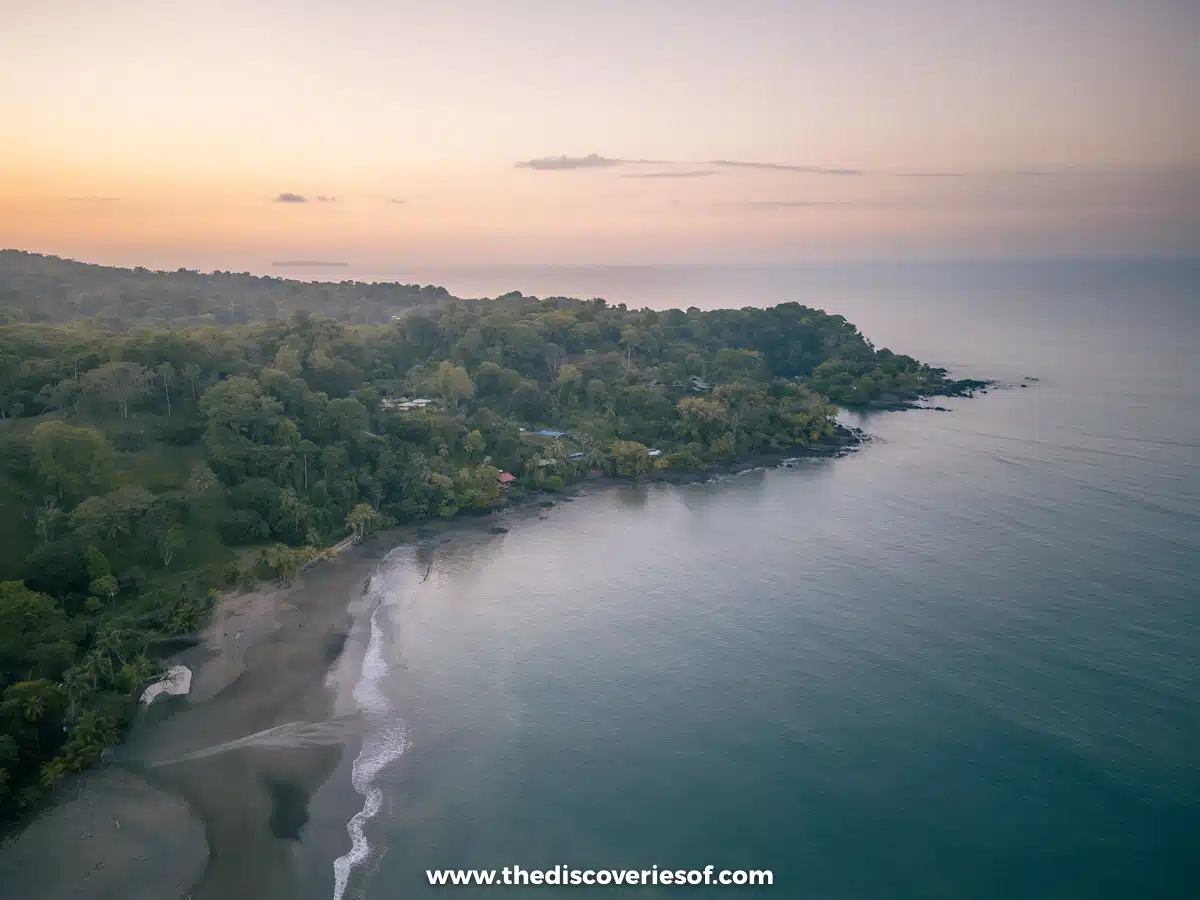
Visiting Costa Rica is best from December to April. This is the dry season, so you’re going to have the best luck on this itinerary, visiting the beaches and national parks.
If you want to save a little money, you can visit in November or May and get mostly good weather and better hotel rates.
Getting Around
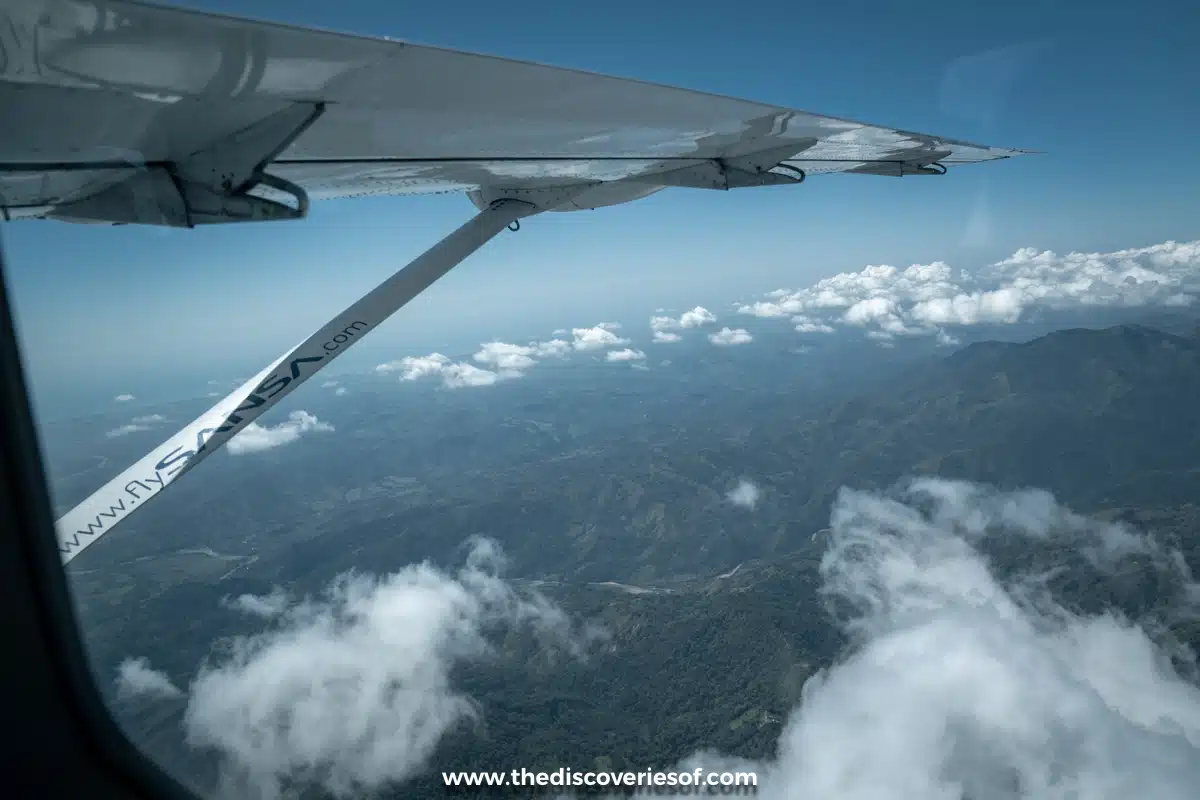
Getting around Costa Rica takes more planning than many other places I’ve been. The roads and public transportation aren’t always reliable, and you need to book transportation into national parks and remote areas in advance to avoid them selling out.
You can reach most major tourist destinations by plane, bus, or shuttle. Sansa Airlines offers reliable flights at affordable prices, and Interbus is a popular tourist shuttle, or you can rely on the local bus system (which is cheaper but takes longer to get around).
I suggest hiring a car in San José and driving to the destinations on this itinerary. If you plan to add Corcovado, you can fly from San José to Drake Bay and take a water taxi to the national park.
Costa Rica Itinerary Map
Read More Costa Rica Guides
- Incredible Things to do in Costa Rica
- The Insider’s Guide to Visiting Manuel Antonio
- Why You Need to Visit Corcovado National Park
- Arenal & La Fortuna Travel Guide
Love This? Save and Share on Pinterest
